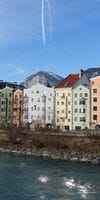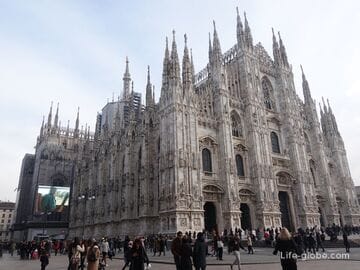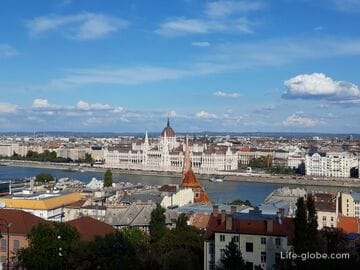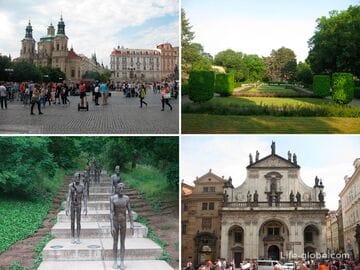Innsbruck is sometimes used as the name Innsbruck - a city in Austria and the capital of Tyrol.
Innsbruck is located in the West of Austria in the Inn valley and surrounded by high mountain ranges, creating stunning views and a cosy atmosphere.
The earliest traces of habitation on this land date back to the period BC. Then the land belonged to the Romans, who founded the military camp of Veldidena. In the process of migration of peoples, the valley Was occupied by the Bavarians. Education Innsbruck's old town dates back to 1180. As the city of Innsbruck was founded in 1234. 14 and 17 century, the Tyrol and Innsbruck were under the rule of the Habsburgs. When Maximilian I, Innsbruck became one of the most important centres of European politics and culture. After the war of Napoleon, the city again came under the rule of Bavaria, however, the Congress of Vienna in 1814 Innsbruck was returned to Austria.
Currently, Innsbruck, primarily known as a ski resort and the capital of several Olympic games. Especially popular Innsbruck to be on Christmas eve, when the city Christmas fair.
However, at any time of the year is Innsbruck can be a great solution for travelers, as the city holds in its embrace a considerable number of attractions, including museums, lookouts, historic monuments and nature parks.
Even a simple stroll through the streets of the centre of Innsbruck can bring a lot of fun, because of the many corners of the city offer beautiful views of towering mountain ranges.
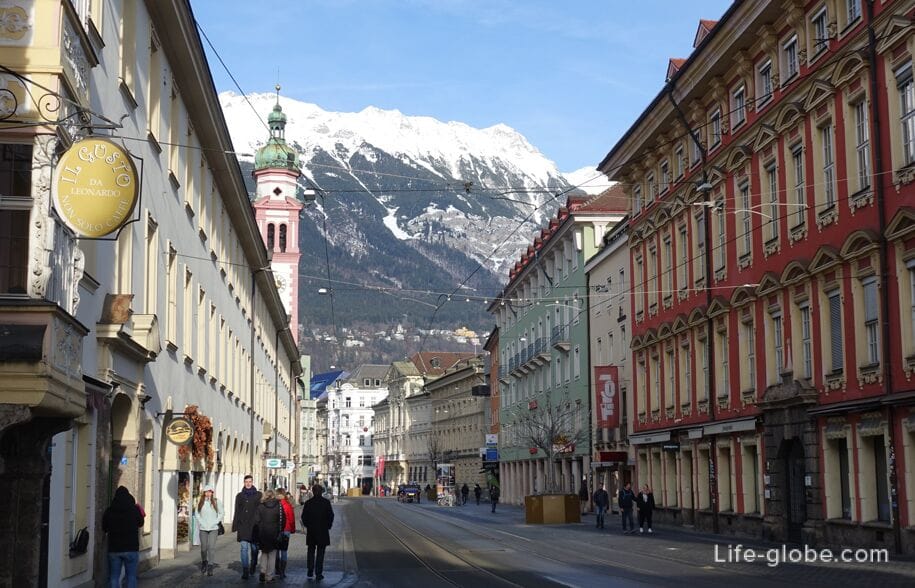

The centre of Innsbruck: the main tourist street (old and new town)
The centre of Innsbruck, which runs the main tourist life and the great bulk of the attractions are located around two streets: street Maria-Theresien-Strasse (Maria-Theresien-Straße) and Herzog-Friedrich-straße (Herzog-Friedrich-Straße), which are the main axes of the historical centre of Innsbruck.
Street Herzog-Friedrich-straße
Street Duke Frederick is the Central street (main artery) of the Old town of Innsbruck and one of the main pedestrian streets of the city centre.
Education of the street as the basis of all of the old town, dates back to the 12th century.
The street was named in honour of Frederick IV of Habsburg.
Today, the Herzog-Friedrich-Strasse, intersects the old town from the North and South.
Along the street close to each other are bright and elegant historic building with graceful Bay Windows and open pedestrian arcades on the first floor. In these buildings there are shops, boutiques, cafes and restaurants. Read more about street Duke Frederick...
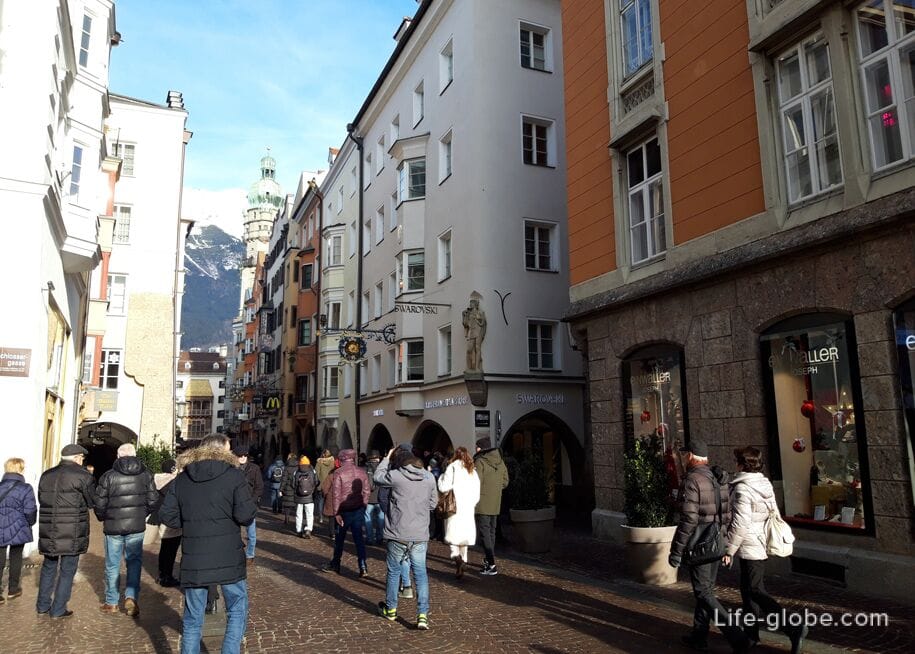
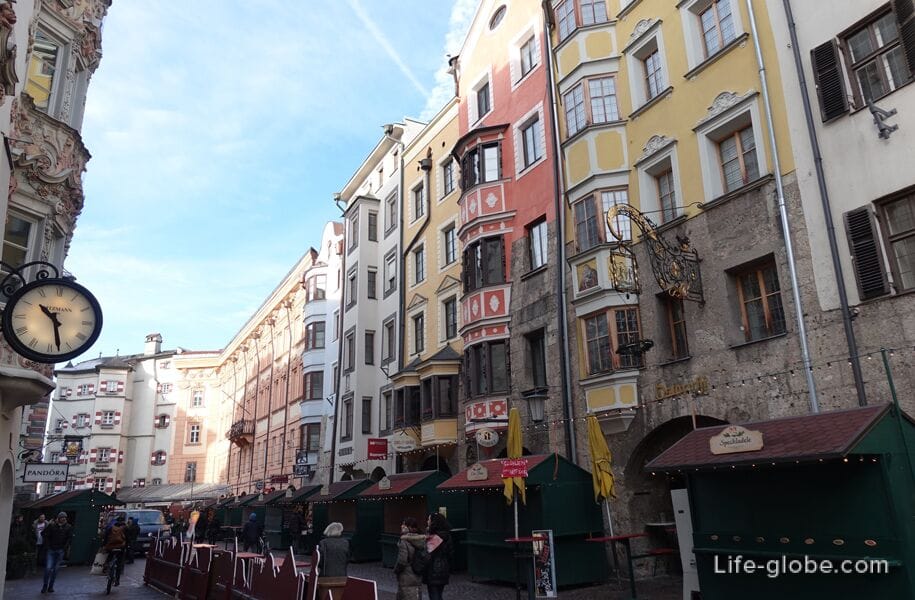
Street Maria-Theresien-Strasse
The street of Maria Theresa the second major, but not least, and one of the busiest streets in the center of Innsbruck.
The street was formed when the city of Innsbruck has started to grow and went beyond the old city - outside the city walls and moat. The new part of the city at that time were the suburbs developed along the arterial road leading South to Wilten (now part of Innsbruck) and was known as "Neustadt" or New town (nova civitas / "Neustadt").
Currently, the Maria Theresa street has a length of nearly 500 meters, slightly curved shape and the Northern part of the street is a pedestrian zone.
Along the street there are historic buildings, most of which are represented by buildings in the Baroque style, there are boutiques, shops, including two shopping centers and cafes and restaurants. Read more about the street of Maria Theresa...
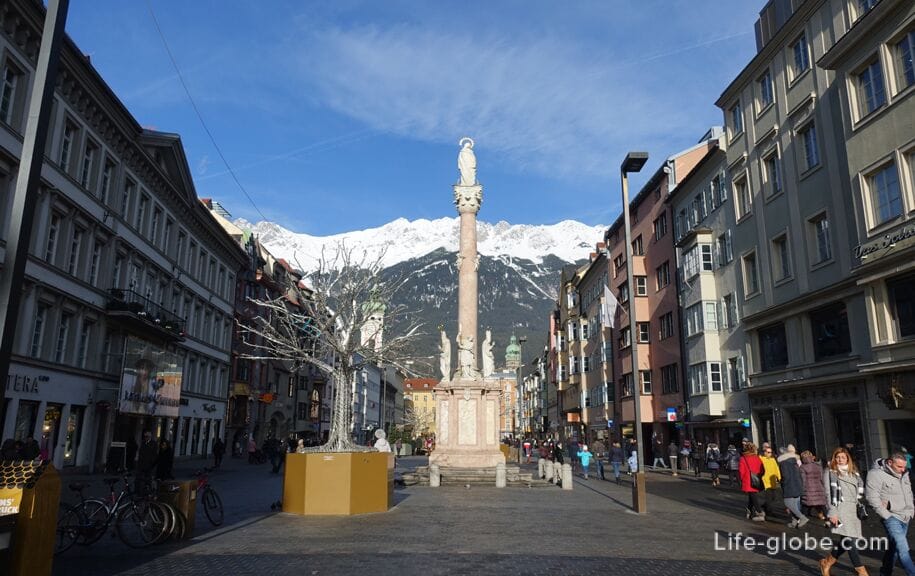
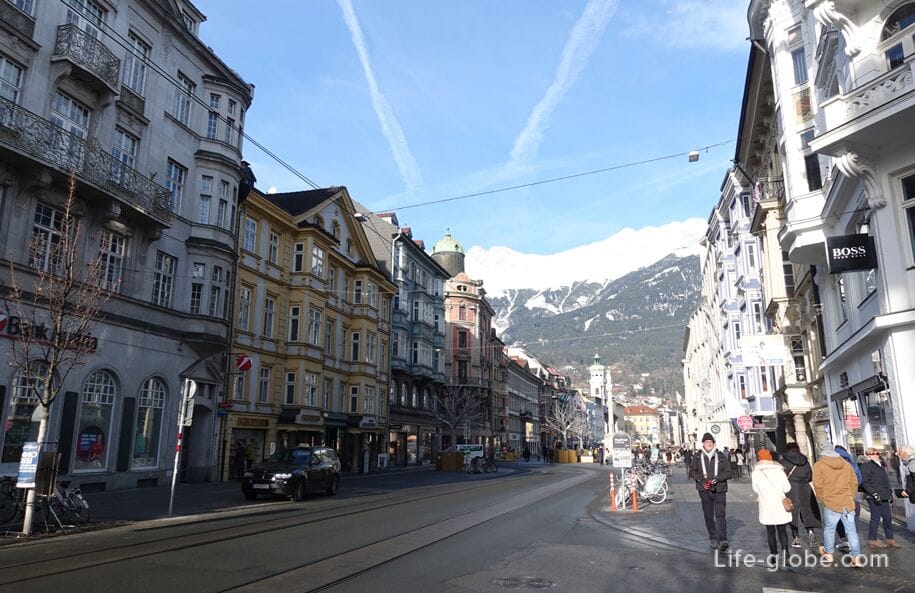
Bridges and embankments of Innsbruck
The embankments of the centre of Innsbruck along the Inn river is notable historic buildings.
Particularly attractive are those buildings, which are located on the left (North) side of the river. They are a facade, behind which rise the peaks of the Tyrolean Alps that creates a picture of unrivalled beauty. This panorama is depicted on many postcards, Souvenirs, as well as in brochures and guidebooks to Innsbruck.
The left and right sides of the Inn river connects several bridges, the most visited of which is the bridge Inn (Bridge Inn), which connects the old town of Innsbruck (outside Duke Frederick) historic center of Vienna-St. Nicholas (Mariahilf-St. Nikolaus), which is a narrow strip stretches along the North side of the river, and which is a continuation of the historic city of Innsbruck. Read more about Mariahilf district-St. Nicholas...
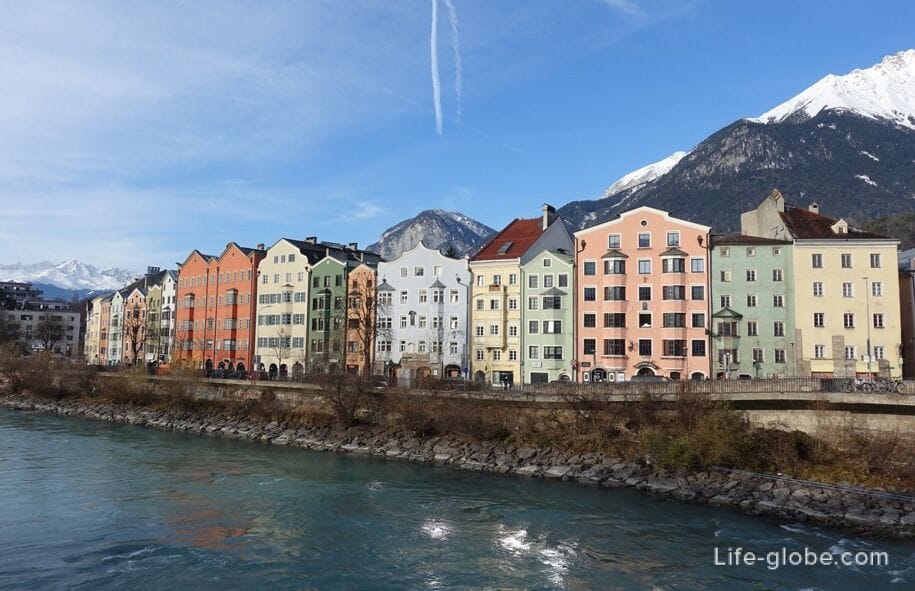
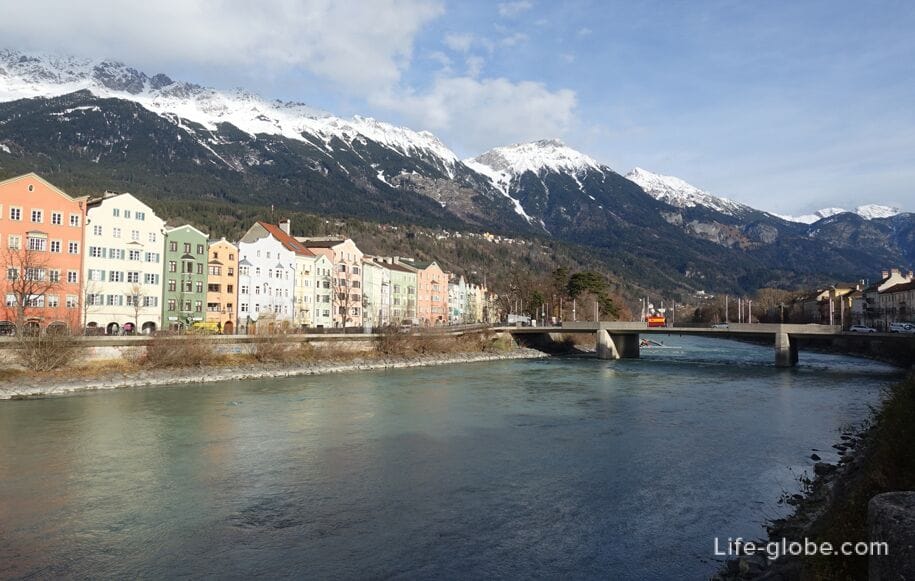
The main attractions of Innsbruck
The Golden roof of Innsbruck
The Golden roof or simply "Golden roof" of Innsbruck (Goldenes Dachl) is one of the most recognizable buildings in the city, the facade of which is a Bay window, called the "Golden roof".
The Bay window is covered with 2 567 gold-plated copper tiles, giving the name of the restaurant "Golden roof". In addition, the facade of the balcony are covered with paintings and reliefs, consisting of scenes from the life of Emperor Maximilian I.
In the building with the Gold roof is currently a Museum of the Golden roof (Goldenes Dachl Museum).
The website of the Museum of the Golden roof: innsbruck.gv.
Address: Herzog-Friedrich-Straße 15. Read more about the Golden roof...
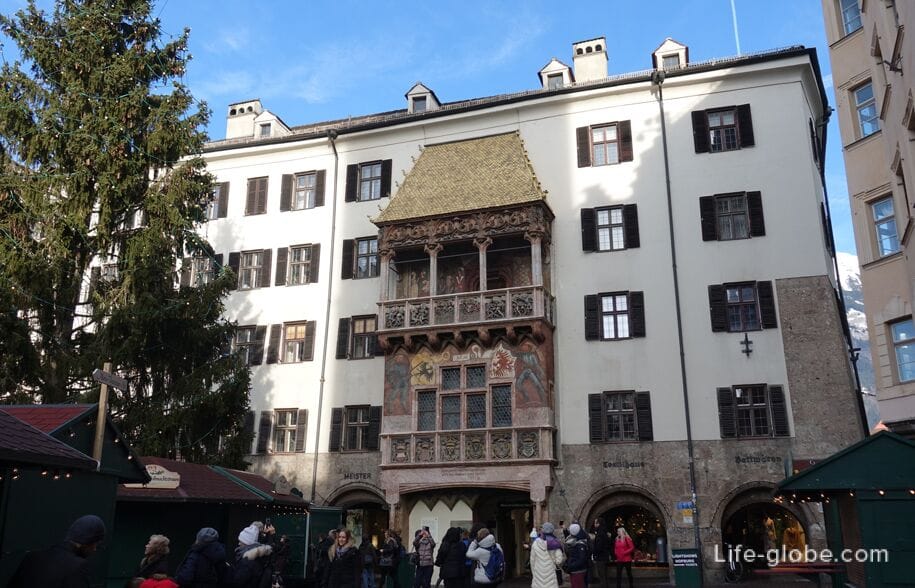
House Of Helbling
House of Helbling or Helblinghaus, also known as the house of Helbling (Helblinghaus), originally a townhouse in the early Gothic style, like most of the surrounding buildings, but in 1725-1730 years purchased luxurious finish with stucco in the Rococo style, which can be seen today.
Address: Herzog-Friedrich-Straße, 10. Read more about the house of Helbling...
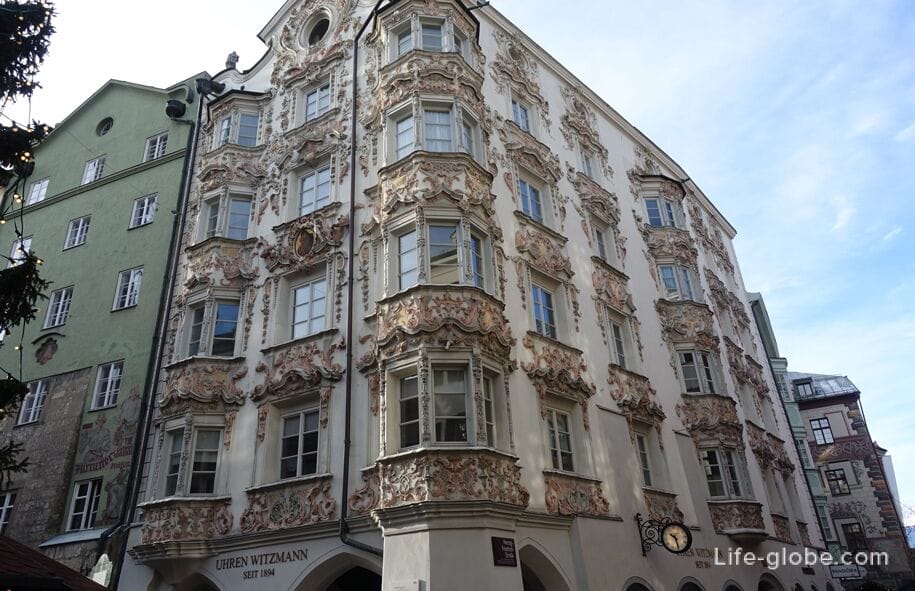
Old town hall with the city tower
The building of the old town hall was built in 1358, and during its history has undergone several structural changes.
To the right side wall of the hall adjacent to the high City tower (Stadtturm) built between 1442 and 1450 years. The tower was a lookout structure for the conduct of patrols, and the lower floors served as a prison.
On the city tower (altitude 31 m) is an open platform, which is a circular observation deck, granting 360-degree views over the Innsbruck, the historic centre, the mountains and the surrounding area.
Address: Herzog-Friedrich-Straße 21. Read more about old town hall with the city tower and observation deck...

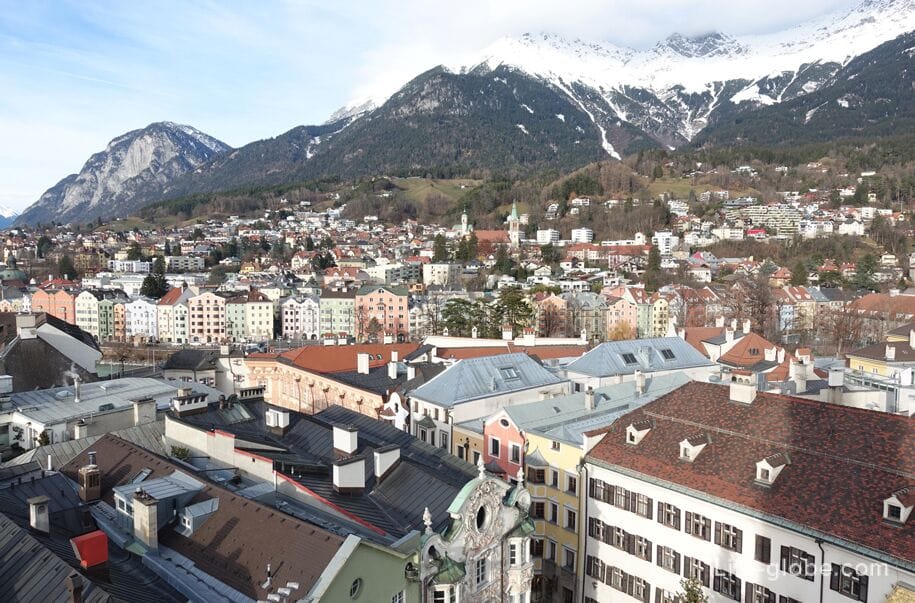
The Hofburg and the Hofkirche
The Hofburg (Kaiserliche Hofburg) - the former Imperial Palace (the residence of the Tyrolean princes), Dating from 1453. During the history, the Palace was repeatedly expanded and restored, changing their appearance.
The Palace is a Museum, the jewel of which is the main hall (Ball room) with frescoes on the ceiling and huge chandeliers.
The website of the Museum of Vienna: hofburg-innsbruck.
Address Hofburg Palace: Rennweg, 1.
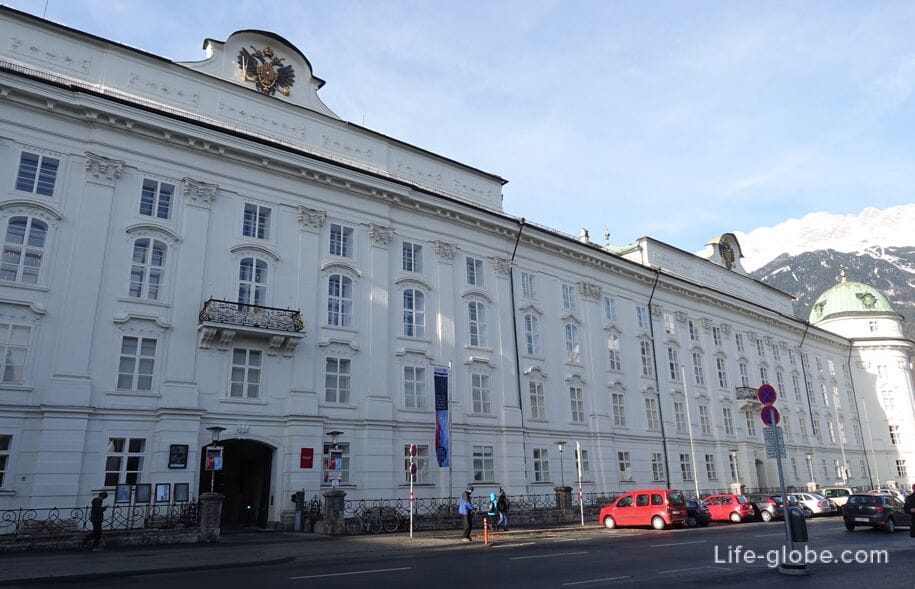
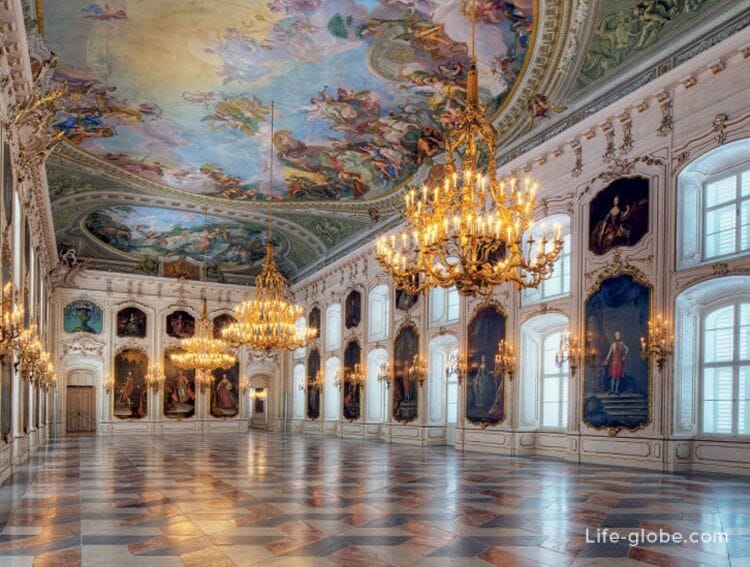
The Hofkirche (court Church) - the former Imperial court Church, which, together with the adjacent Franciscan monastery, was built in the years 1553-1563 by Emperor Ferdinand I as a memorial of his grandfather the Emperor Maximilian I.
In the walls of the Church are: the silver chapel, on the Renaissance high altar and a ceremonial tomb - Cenotaph of Maximilian I surrounded by 28 large black bronze statues of ancestors, relatives and heroes of the contemporaries of the Emperor. For this reason, the Church is also called Church "Black people".
The entrance to the Church is paid. Website Hofkirche: tiroler-landesmuseen.
Address: Universitätsstraße, 2. Read more about residences of the rulers of Tyrol in Innsbruck...
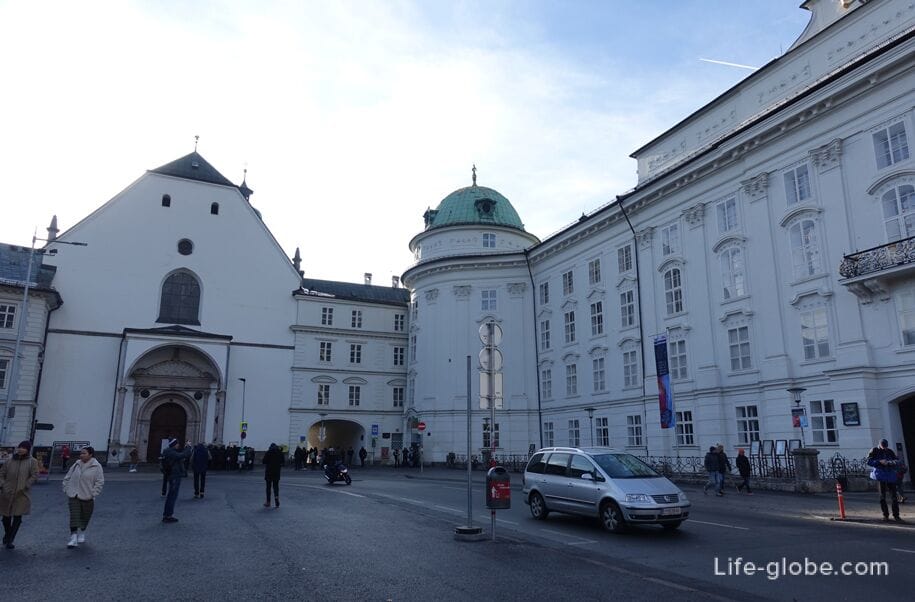
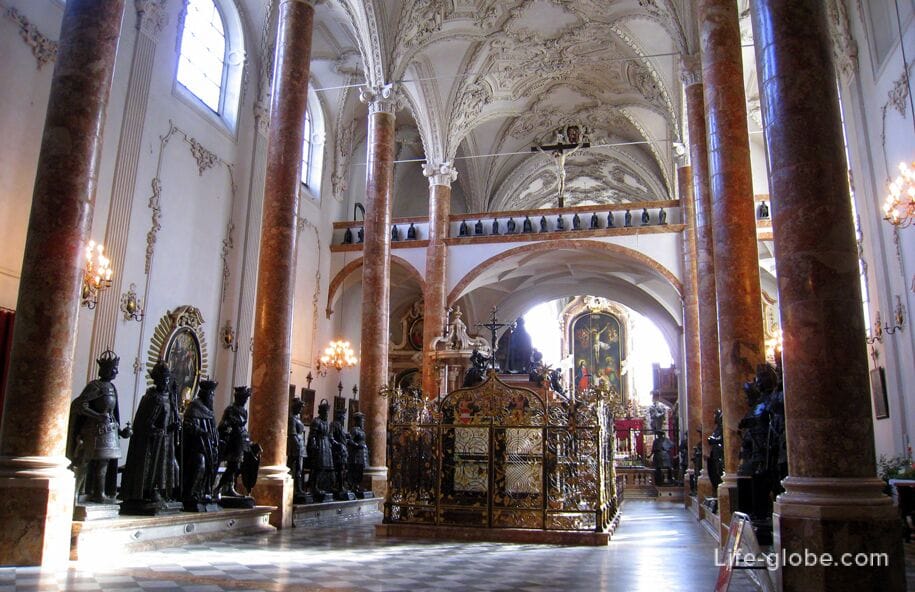
Cathedral of St. James (now the Cathedral)
Cathedral of Saint James / Jacob (Dom zu St. Jakom) is the main Catholic Church of the city.
The appearance of the Cathedral is rather modest and austere. However, unlike the exterior, the interior has a luxurious Baroque interior, where bright colors play marble, frescos and stucco work where sculpture and sculptural composition.
Address: Domplatz 6. Read more about Cathedral of St. James...
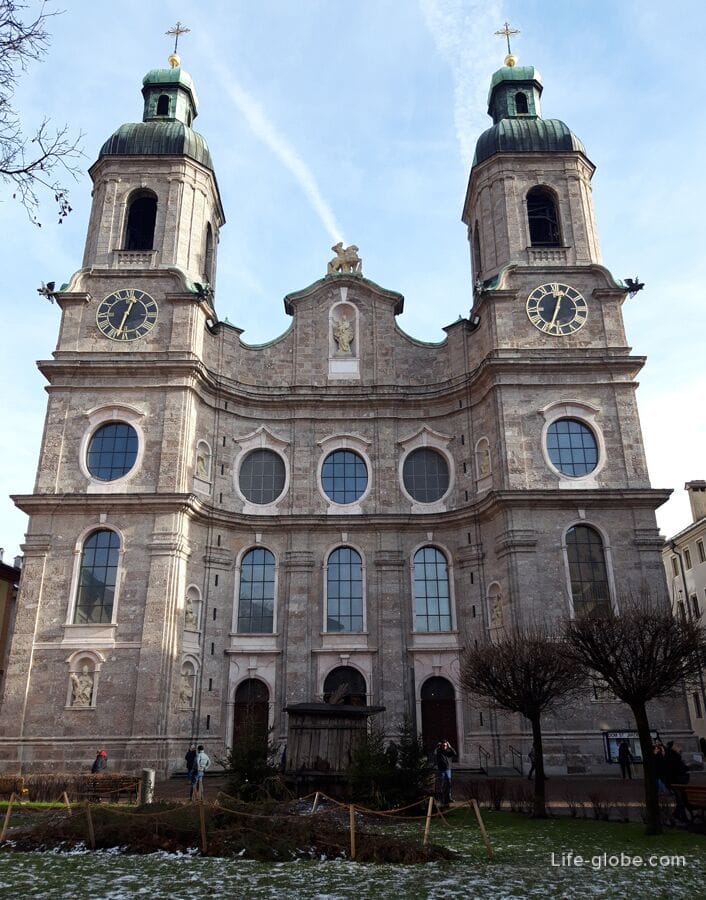
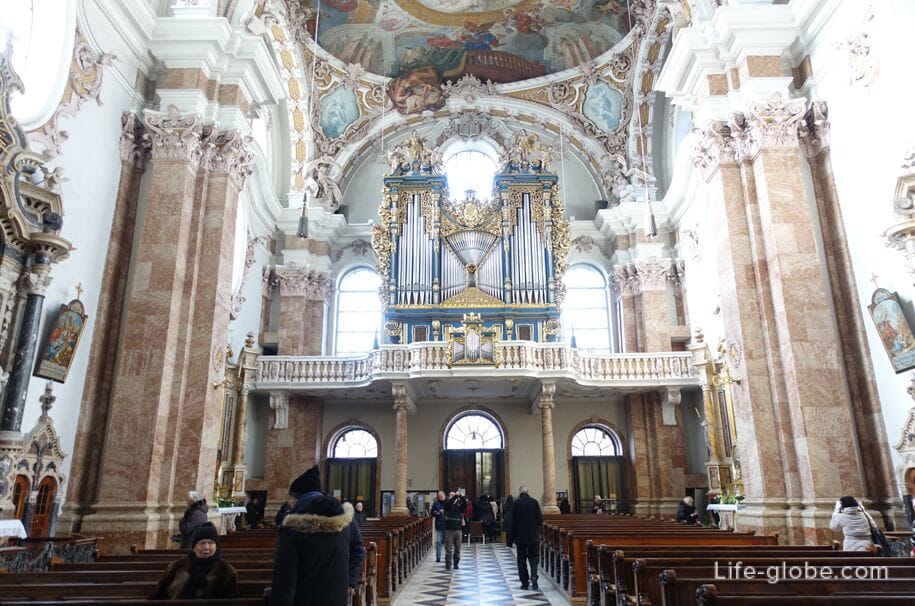
The column of St. Anne
The St. Anne's column (Annasäule / St. Anne's Column) stands in the center of the street of Maria Theresa and is one of the symbols of Innsbruck.
The column was erected after the war for the Spanish heritage (Bavarian invasion), as thanks to higher powers for victory. The enemy was defeated, and banished the last of the Bavarian troops on July 26, the feast of St. Anne. Hence the name "the column of St. Anne". Read more about the column of St. Anne...
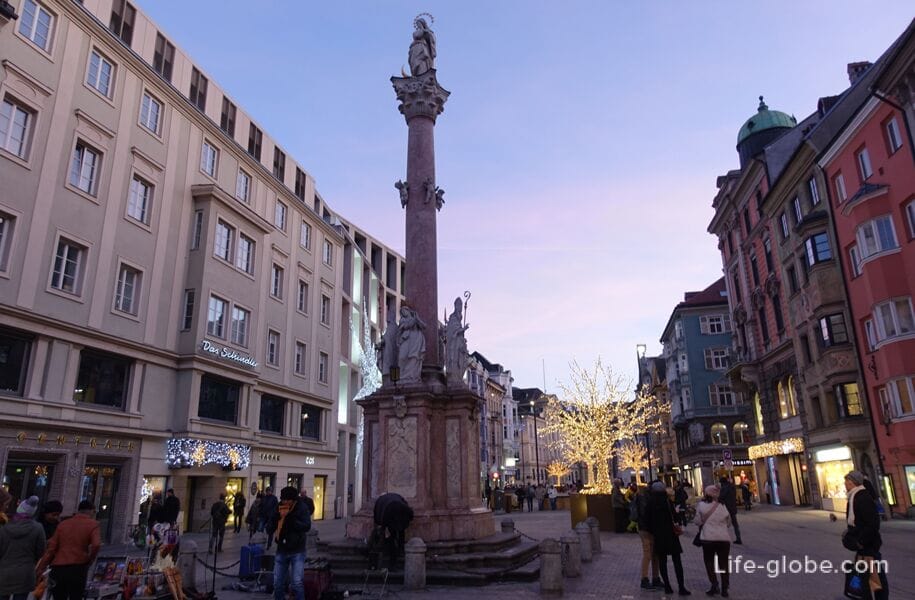
Arch
Triumphal arch (Triumphpforte) were erected by order of Maria Theresa in the 18th century, when the Empress had planned his son's wedding of Archduke Leopold with a Spanish Princess Maria Ludovico.
In addition to the main entry of character in the historic part of the city, the triumphal arch also serves as a reminder of joy and sorrow at the same time. The fact that during the preparation for the wedding, on 18 August 1765, the husband died, the Empress and the father of the groom.
For this reason, arch has two "face": on the North side of the gate depicts a memorial to the memory of the sudden death of the Emperor, and the South is decorated with festive and more colorful motifs with reliefs dedicated to the wedding.
Address: the arch is located in the southern end of Maria Theresa street, near the house at Leopoldstraße, 2. Read more about triumphal arch...
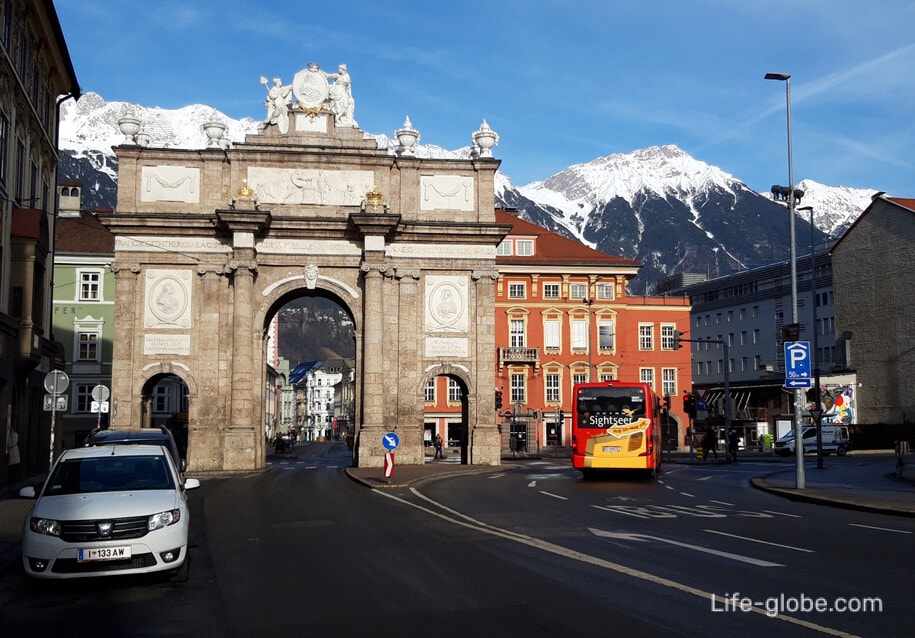
Lift Nordkette
Lift Nordkette (Nordkettenbahnen) - not only a popular tourist attraction and entertainment in Innsbruck, but is also just 20-30 minutes from downtown to get to the top of the mountains (height of about 2 300 metres) and viewpoint Hafelekar (Hafelekar) - South mountain range, the largest nature Park of Austria Karwendel mountains (Karwendel).
The lift has three means of transport - a funicular railway and two cable cars. To get from the centre of Innsbruck to the top station, having made the ascent in three stages with two changes.
In winter, the gondola is the heart of the ski area Innsbrucker-Nordkettenbahnen, and in the warm season - from the cable car station Hiking trails, there are places for rock climbing.
The website of the Nordkette lift: nordkette.
Address: lower station of the lift (Congress), which runs the funicular, located near the Hofburg Palace at the address: Rennweg, 3. Read more about gondola Nordkette...
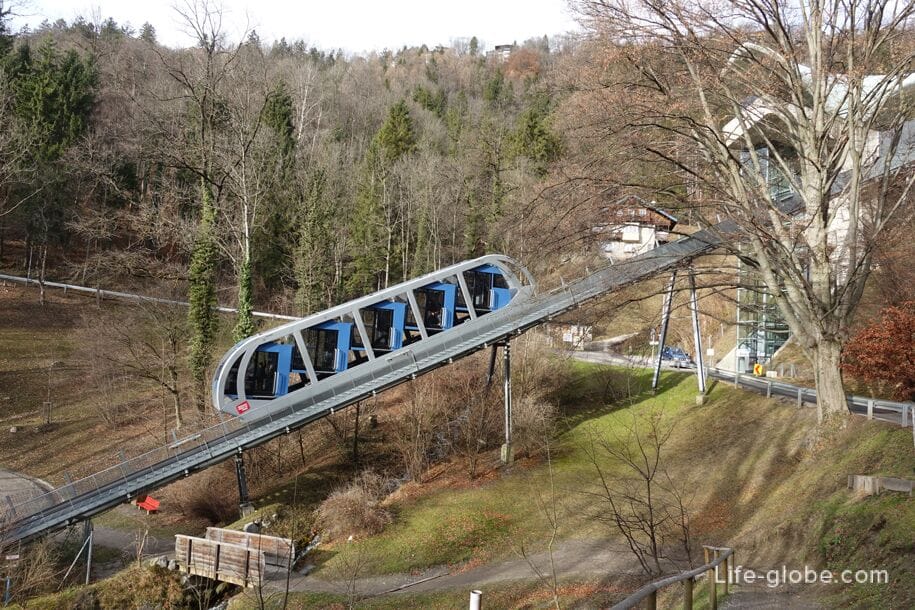
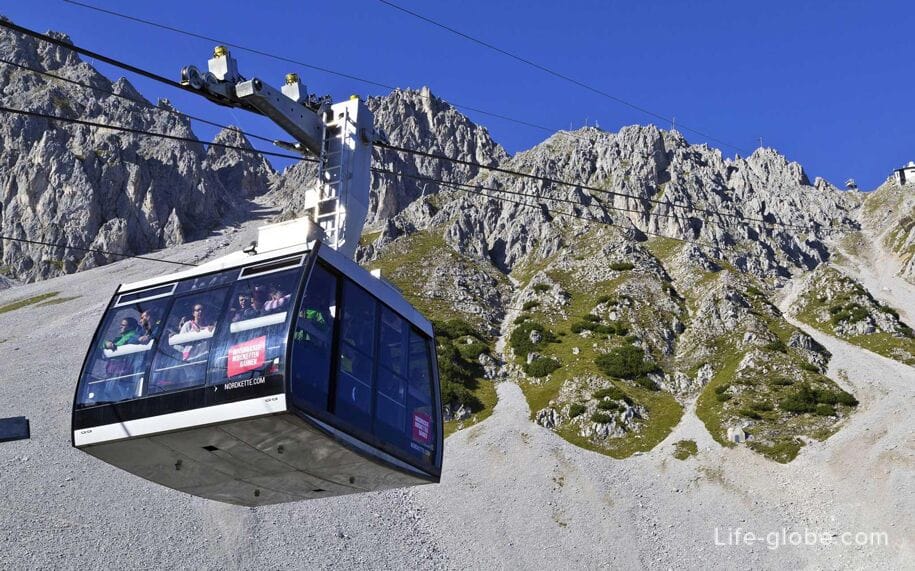
Alpine zoo
The Alpine zoo of Innsbruck (Innsbruck Alpenzoo) is the highest themed zoo in Europe. The zoo is situated at an altitude of 750 meters above sea level.
In Alpenzoo about 2,000 Alpine animals (150 species) inhabit areas just over 4 acres in natural enclosures, terrariums and aquariums.
The highlight of the zoo is that it demonstrates the most comprehensive collection of wild animals from the Alpine region.
The website of the zoo: alpenzoo.
Address: the zoo is located at the foot of the Nordkette, at the following address: Weiherburggasse, 37a.
From the centre of Innsbruck zoo can be reached by cable car Nordkette lift, walk or drive by car (rent a car in Innsbruck...) or bus line W. Near the zoo, there are places to Park the car.
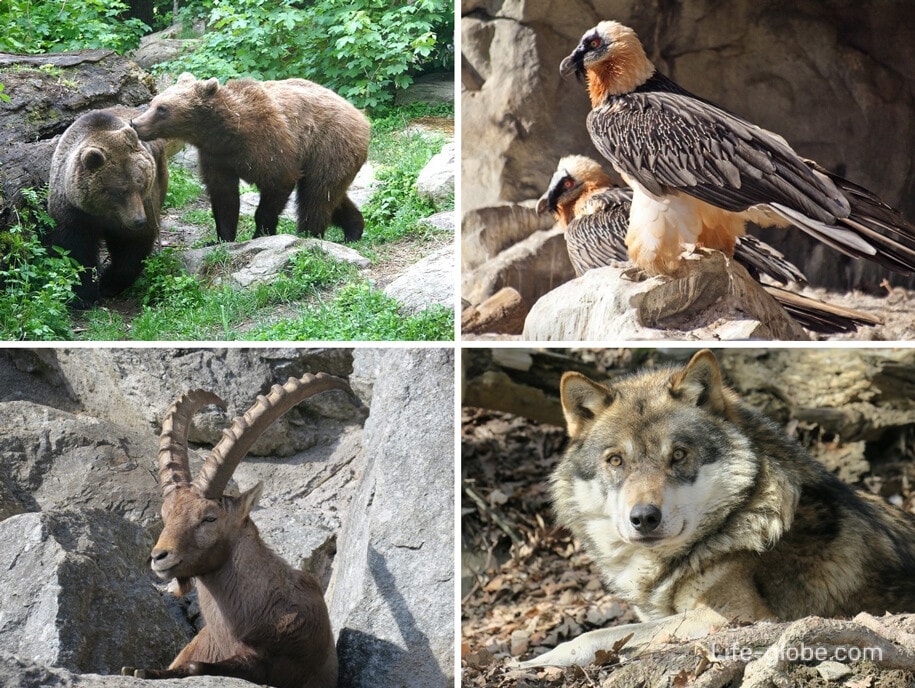
Ambras Castle
Ambras castle (Schloss Ambras) is one of the most important and popular sights of Innsbruck.
Its cultural and historical significance is inseparably linked with the personality of Archduke Ferdinand II, who founded the first collection Embrace and for which, on his initiative, was built the Museum.
Today the castle is a Museum complex with landscaped gardens, a courtyard, a chapel and several buildings, which house galleries and rooms of the exhibition.
Site the Ambras castle: schlossambras.
Address: the castle is situated on a hill on the southeastern outskirts of Innsbruck, address: Schloßstraße 20. Read more about the castle and the Museum of Ambras...
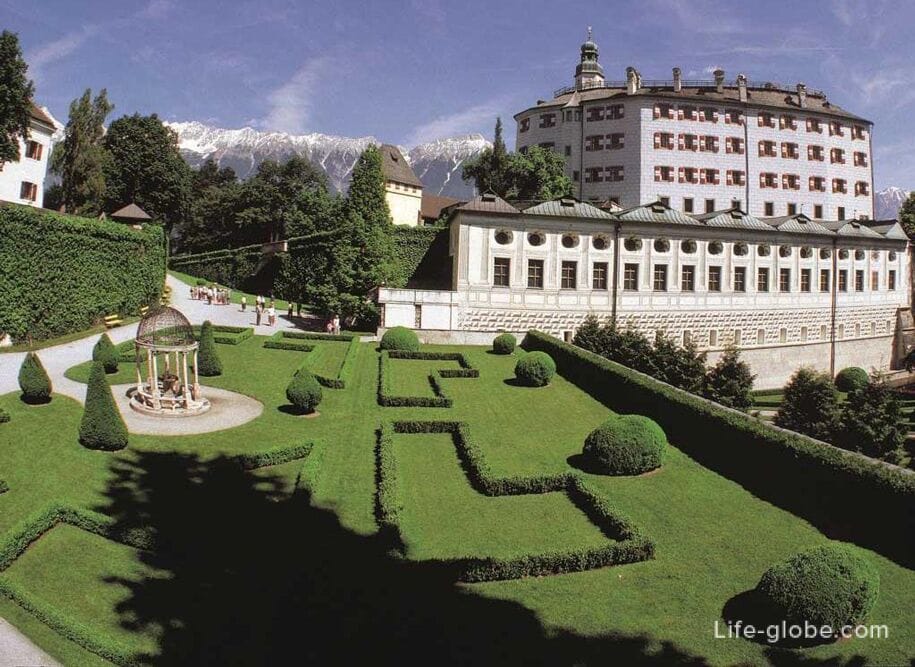
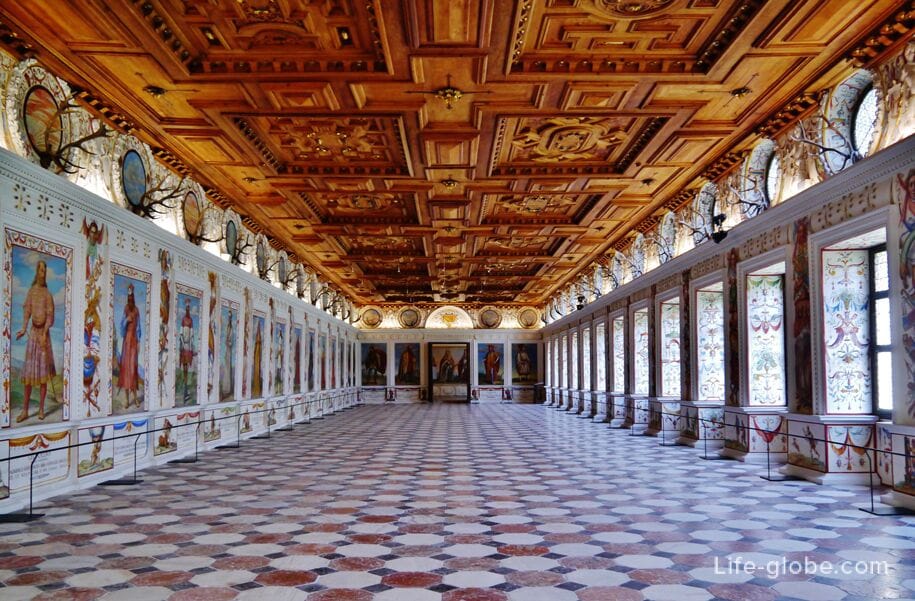
Jump Bergisel
Ski jump "Berg isel" (Bergiselschanze, the Bergisel Schanze) with Olympic history, in its present form was built under the project of Zaha Hadid, which won the prestigious architectural prize for his masterpiece.
In the tower of jump is a panoramic restaurant "Bergisel Sky" with a glass facades from floor to ceiling and a viewing deck (panoramic terrace), granting a stunning overview of Innsbruck and the surrounding area.
Site jump: the bergisel.
Address: Bergiselweg, 3. Read more about the jump Bergisel...

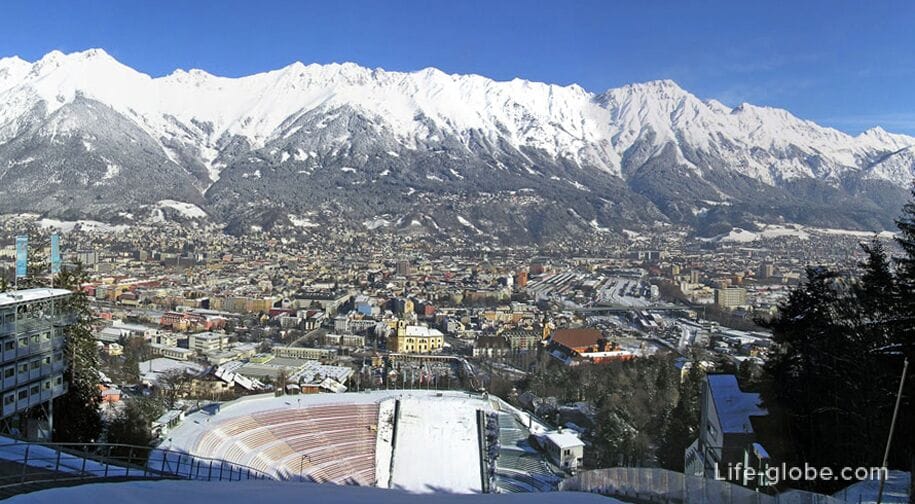
Basilica Wilten
Wilten Basilica (Wiltener Basilika), also known as Basilica of our lady of the Immaculate Conception - Roman Catholic Church, serving a parish Church and a popular Church of pilgrimage.
Church of our lady was recorded in 1259.
In the years 1751-1756 the building was constructed in the Rococo style in return, by that time the old Church building. In 1957, Pope Pius XII was founded the parish Church Wilten.
The interior of the Church is notable for the rich decoration with soft colours, light but rich with stucco, with exquisite frescoes, the high altar and the organ.
Address: Haymongasse, 6a / Pastorstraße, 694.
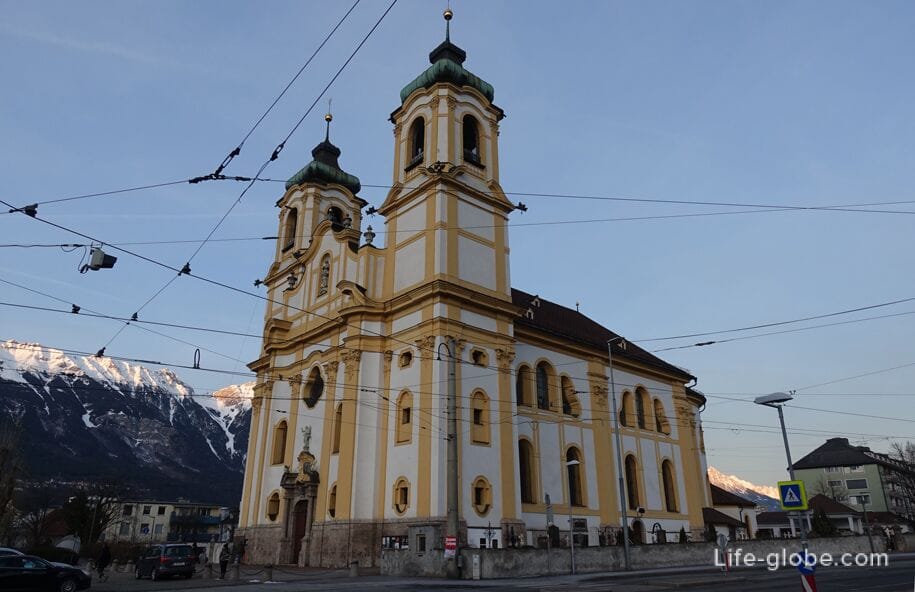

The Monastery Wilten
The monastery Wilten (Wilten Abbey, Stift Wilten) is a Premonstratensian monastery, founded in 1138, the year Bishop Reinbert von Brixen.
The heyday of the monastery had on the 17th and 18th century.
The interior of the Cathedral Church of the monastery stands the splendor of the Baroque, with an eye to combine dark and light shades, as well as frescoes, stucco work, sculpture, the main altar and side chapels.
Address: Klostergasse, 7.

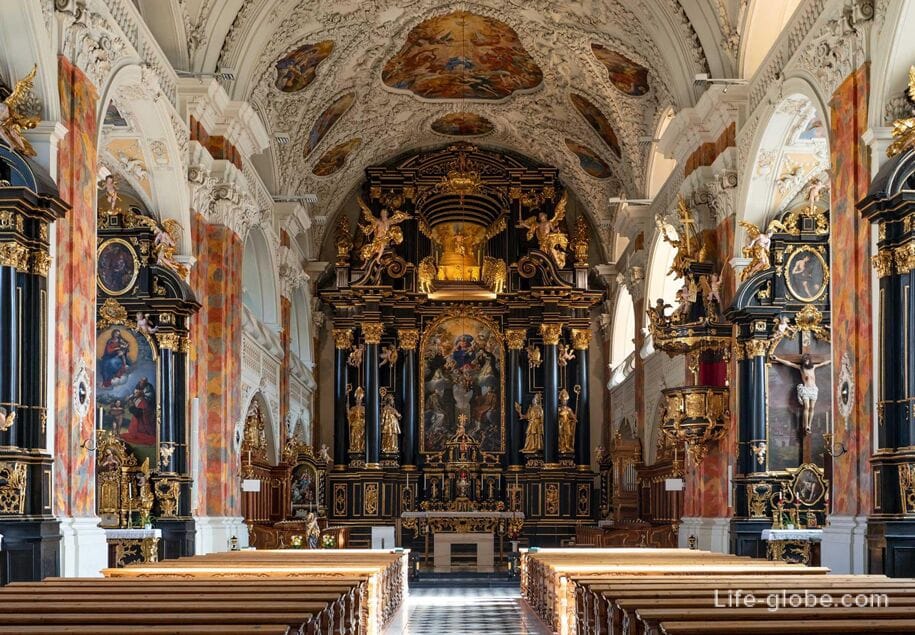
The main museums of Innsbruck
In addition to the Museum of the Golden roof and museums located in Hofburg Palace and Ambras castle in Innsbruck there are several important and visited museums.
Tyrolean provincial Museum ferdinandeum
The Tyrolean Museum ferdinandeum (Ferdinandeum Tiroler Landesmuseen) is located in a large historic building in neo-Renaissance style (1842-1845 years).
The Museum collection tells the history of the Tirol region, and not only - from the stone age to the present.
The Museum's site: tiroler-landesmuseen.
Address: Museumstraße, 15.
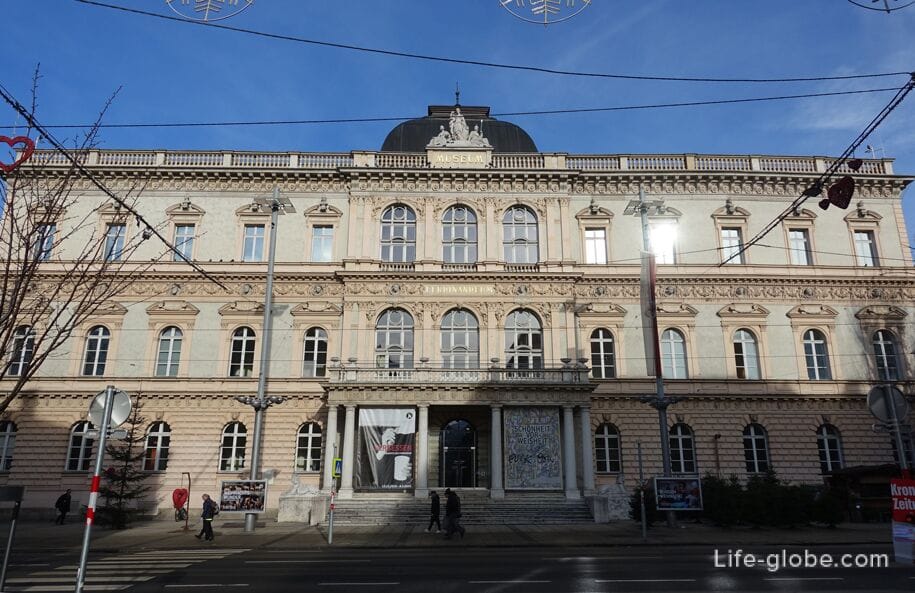
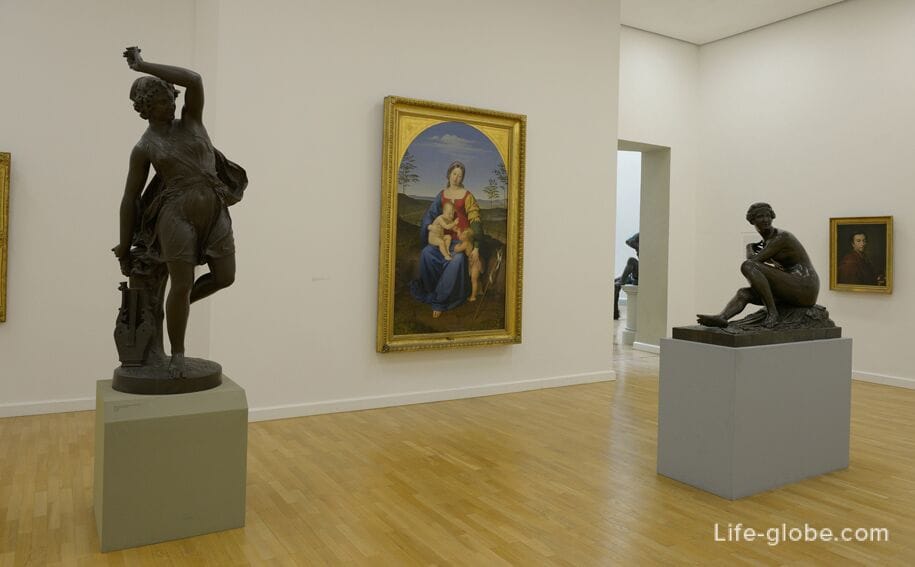
Tyrolean folk art Museum
Tyrolean folk art Museum (Tiroler Volkskunstmuseum) is located in the walls of the former Franciscan monastery around an arcade courtyard.
The Renaissance building with well-preserved monastery was used until 1785 as the Franciscan monastery, and then mainly as a school and since 1929, is home to the Museum of Tyrolean regional heritage.
The Museum contains a collection of cultural exhibits from local traditions of Tyrol, including the peasant Handicrafts and local items.
The Museum's site: tiroler-landesmuseen.
Address: Universitätsstraße, 2.
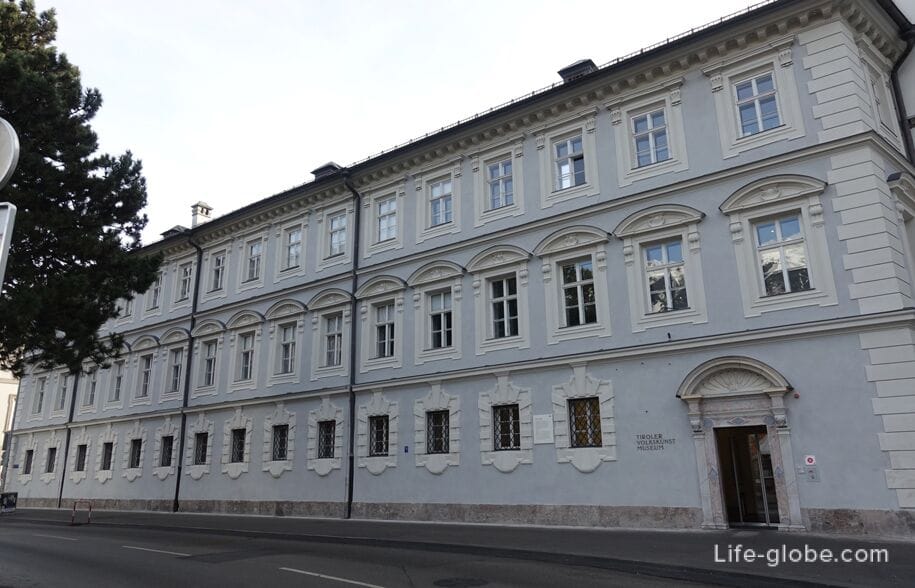
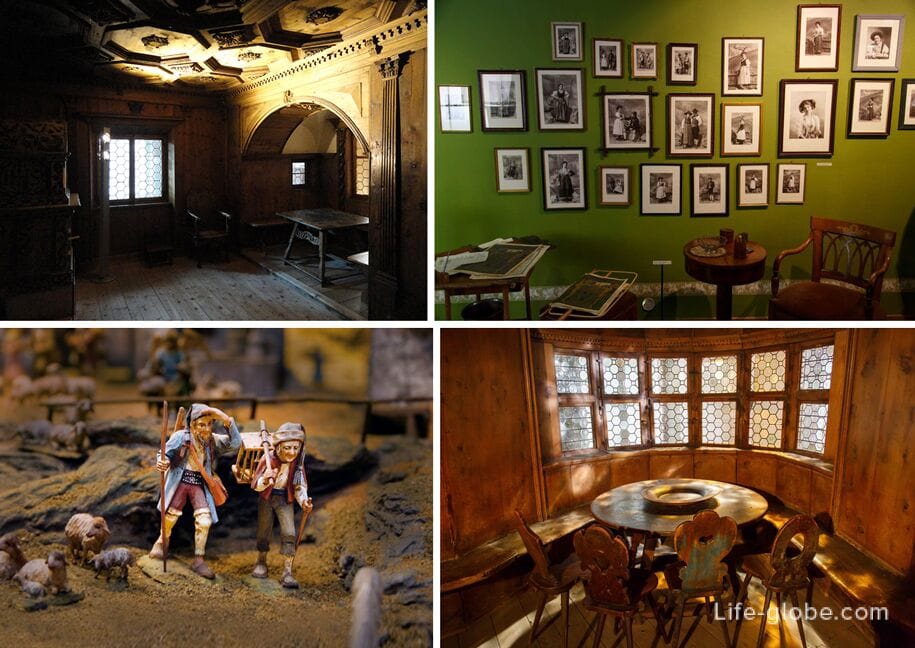
The Museum of cultural history of Tyrol
The Museum of cultural history of Tyrol (Zeughaus, Museum im Zeughaus) located in a historic building - the former Arsenal Maximilian I, built between 1500 and 1506. The building was used until 1955 as a military Arsenal. In 1973, the walls of the building was opened Museum of Tyrolean regional heritage.
At present the Museum collections of Geology and Mineralogy of the country; typical objects from different historical periods: mining, religion, Napoleonic epoch, 19th century, with the advent of tourism and the world wars.
The Museum's site: tiroler-landesmuseen.
Address: Zeughausgasse, 1.
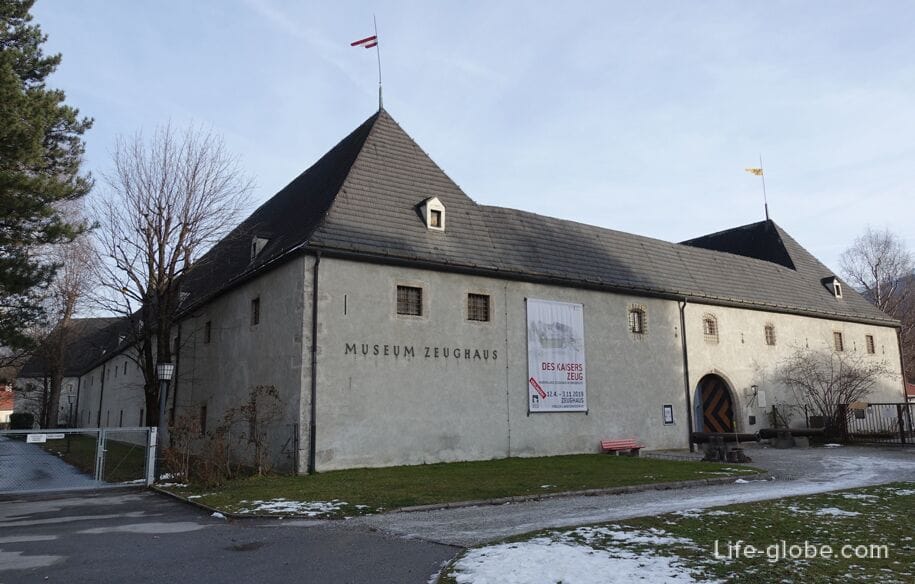
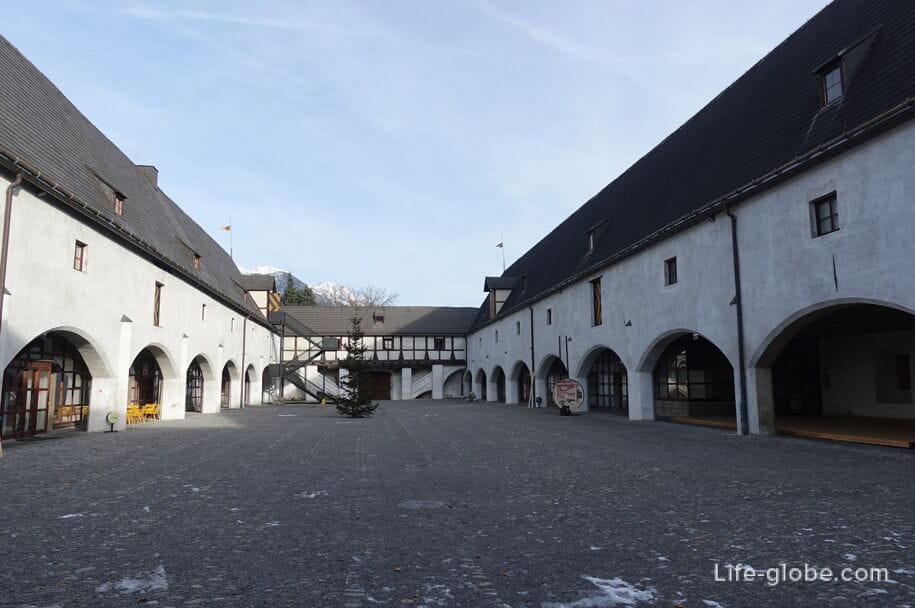
Museum Bergisel
Regimental Museum of the Tyrolean Imperial Riflemen Museum Kaiserjager known as the Museum Bergisel (Kaiserjägermuseum) and the new building Tirol Panorama which is also a Museum (Tirol Panorama Museum), represent a single complex of the military historical Museum Bergisel.
The masterpiece of the Museum is a large panoramic painting, which reflects the Tyrolean struggle for freedom on 13 August 1809 with a picture of the events of 1 000 square meters in 360 degrees.
The website of the Museum Bergisel: tiroler-landesmuseen.
Address: the Museum is located on the hill of Bergisel, at Bergisel, 1-2.
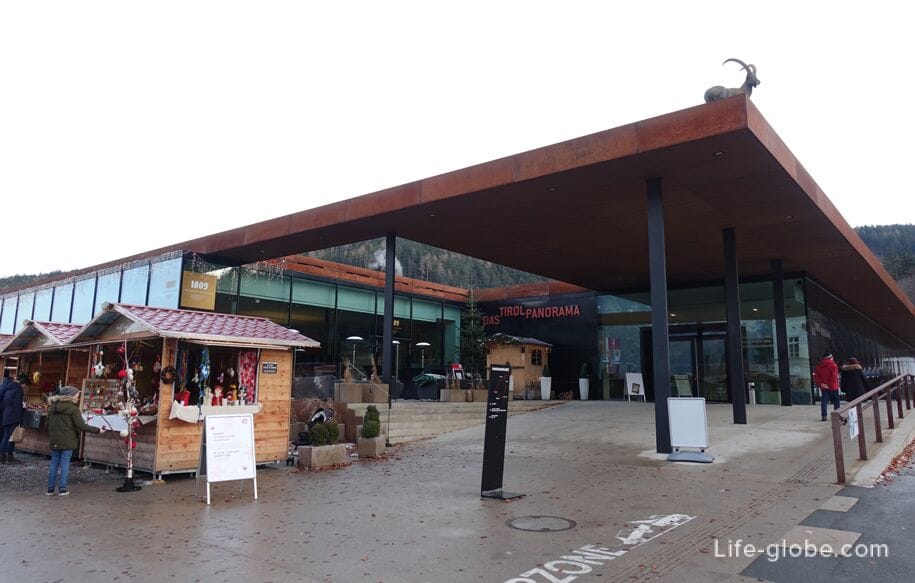
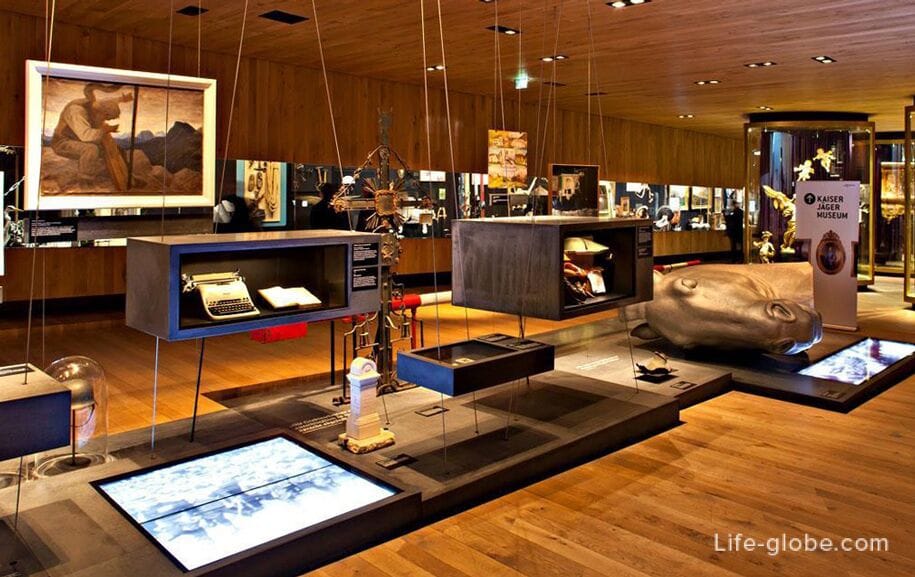
More complete and detailed list of attractions, museums, important sites and interesting places in Innsbruck can be viewed here →
Parks Of Innsbruck
The most visited Park in the centre of Innsbruck is the Hofgarten or court garden (Hofgarten), located near the Hofburg Palace and originally founded on the site of river meadows under the leadership of Archduke Ferdinand II in the sixteenth century.
Currently, the Hofgarten is a recreation area with lots of greenery, children's Playground, a palm house and a Tyrolean arts pavilion.
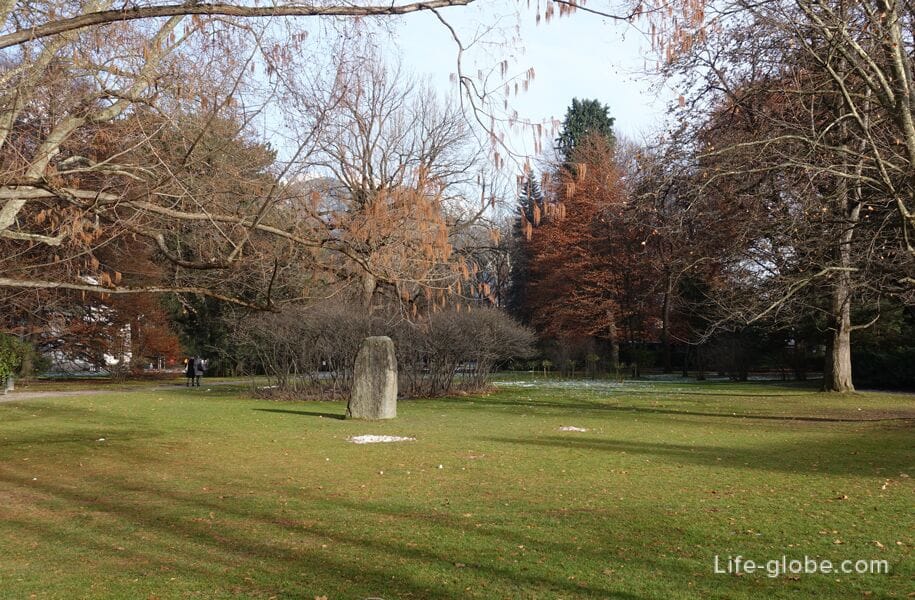
City Park Rapoldi (Stadtpark Rapoldi) with lush vegetation and a pond, offers a wide range of sports, games or leisure.
Address: Körnerstraße.

Botanical garden of the University of Innsbruck (Botanischer Garten des Institutes für Botanik der Universität Innsbruck) in which there are more than 7,000 species of plants from different habitats, including Alpine plants, medicinal, toxic and aromatic plants as well as plants from tropical forests and subtropical drylands.
The site of the Botanical garden: uibk.ac.
Address: Sternwartestraße, 15.
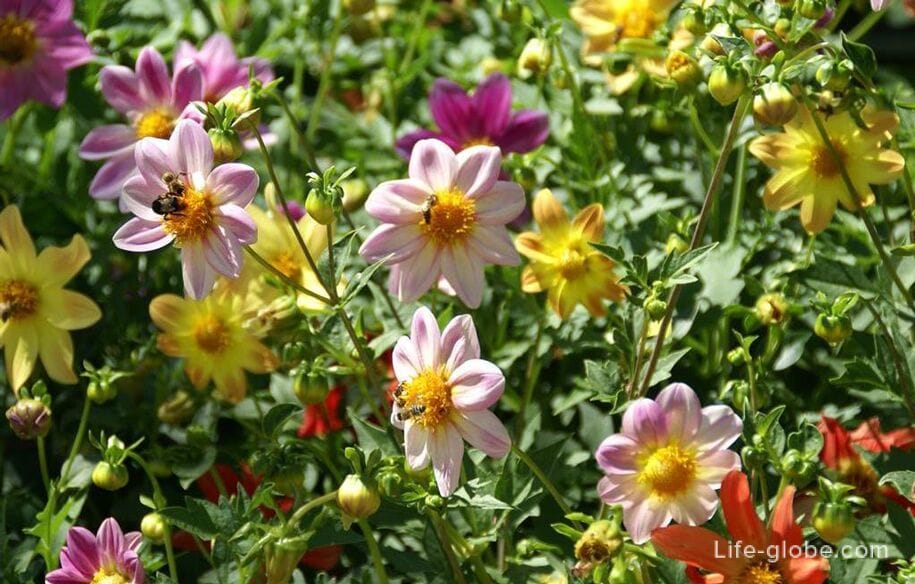
Also in Innsbruck are the security of the Park area, located to the South and North sides of the city centre, which offer, including mountain walks, from easy family to difficult Hiking trails:
- North side of the city, the river Inn has departed (mountainous) terrain with abundant vegetation. For this reason, the areas are natural parks, Hiking and Biking trails and many locations offer panoramic views of Innsbruck, the mountains and the surrounding area. Read more about observation deck of Innsbruck...
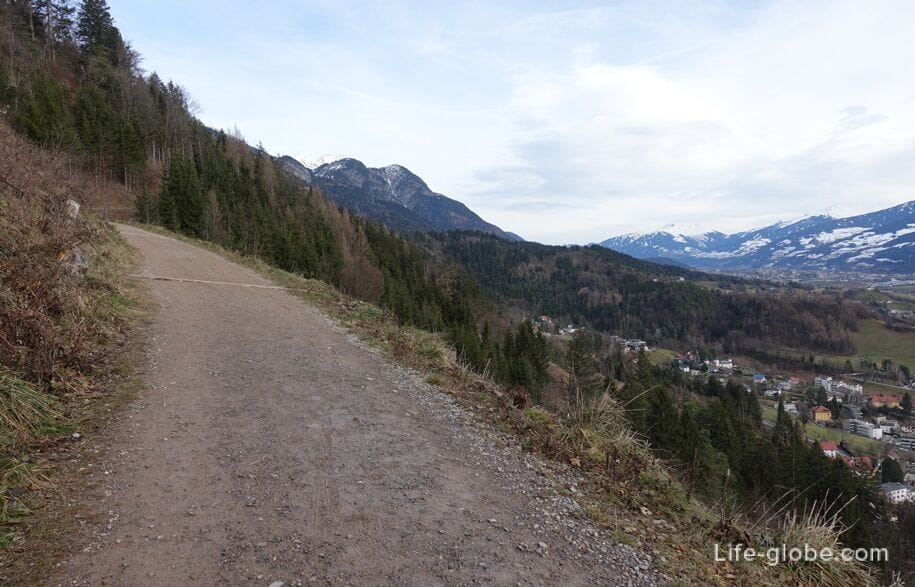

- the southern part of the Innsbruck - Bergisel hill and surrounding areas, also is security, natural Park area and attracts its guests with sightseeing points and Hiking trails, including a Panoramic tour of the Bergisel (Panoramarunde Bergisel), which is an equipped Hiking a circular route, passing through Bergisel, including over the gorge of the Sill (Sillschlucht) and having several observation points. Read more about the hill of Bergisel...
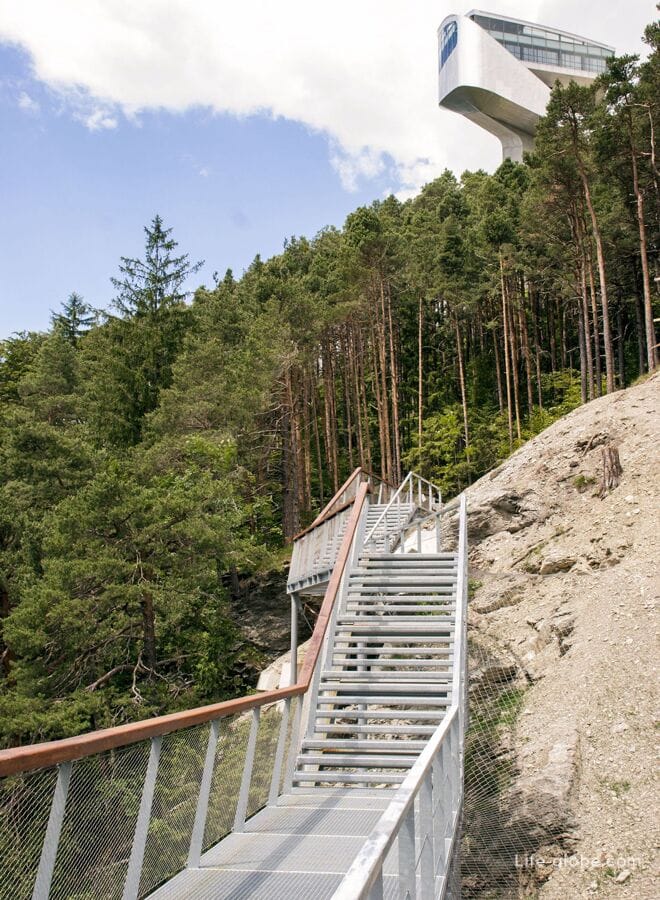
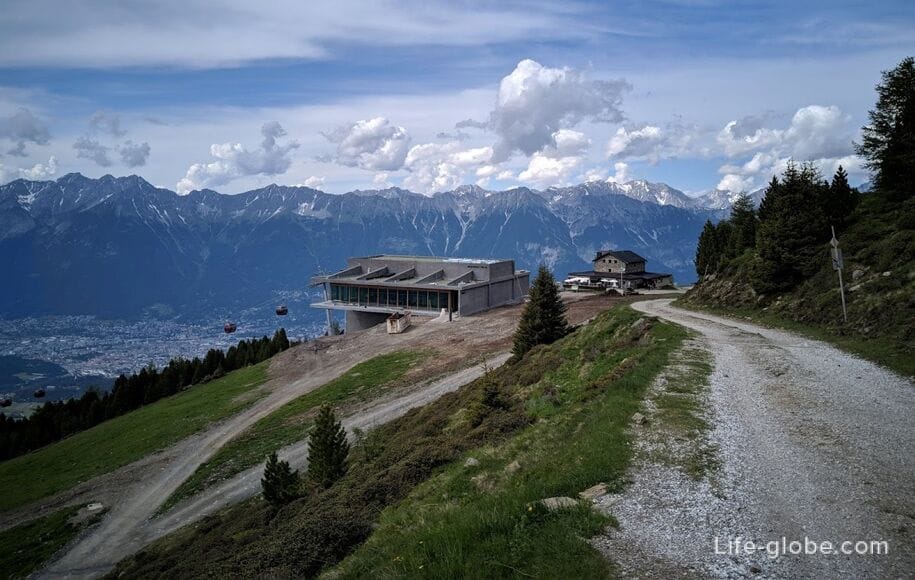
The ski resorts of Innsbruck and the surrounding area
In the area of Innsbruck are 13 ski areas that provide its guests various winter activities and sports, from skiing and snowboarding for all levels of skiing on the equipped slopes to freeride and freestyle; from cross-country skiing, winter Hiking, snowshoeing, of patricinha to children's zones for family holidays and sleigh rides and a toboggan run.
The ski season in Innsbruck lasts from early December to mid April, depending on weather conditions and the location of the resort.
Tourists staying directly in Innsbruck can purchase card Ski pass or Ski Pass Stubai Plus City Innsbruck, which gives the opportunity to enjoy all the ski areas around Innsbruck and the Stubai valley with 308 miles of trails and 111 cable cars, 8 zones with night skiing and / or night tobogganing, as well as the free ski busbringing guests from the centre of Innsbruck to the ski areas, and to visit the sights of Innsbruck.
Ski area:
- coming to the city of Innsbruck: Freeride Lounge Nordkette, Patscherkofel Vital Park;
- more deleted: Olympia Park Axamer Lizum, suitable for children area Muttereralmski resort Kühtai, Glungezer, Schlick 2000, Rangger Kopfl, Elfer, Hochoetz close to Kühtai, Bergeralm, Serles, a children's area at the foot of the grünberg in Obsteig, area for children and those who first gets on skis or snowboard Kinderland Rinn, area for children and beginners Gries im Sellrain;
- the Stubai glacier (Stubaier Gletscher) is the largest ski resort in Austria, offering a variety of opportunities for skiing of all levels and ages as well as a 200 meter ice grotto. On the glacier slopes reach more than 3 200 meters above sea level.
Stubai ski resort is open from October (beginning of November) through may and even June.
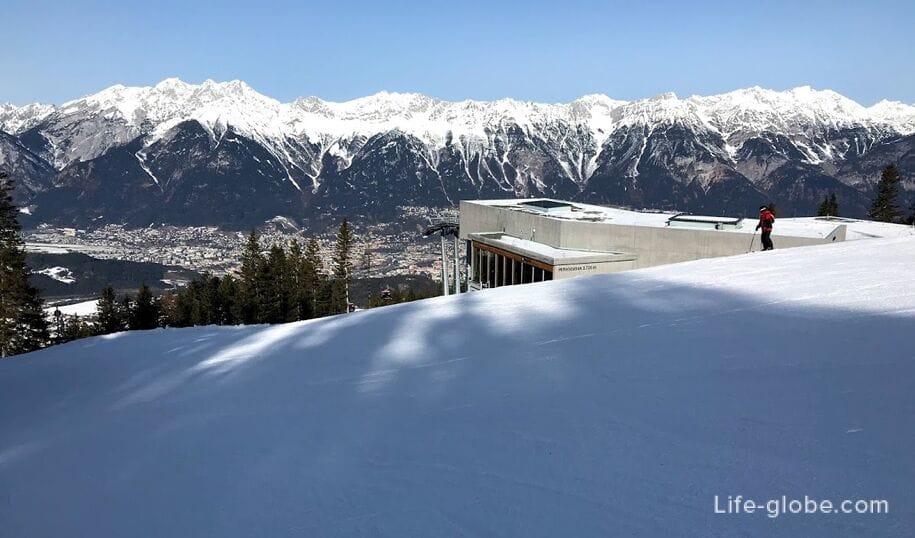
Shopping in Innsbruck
Innsbruck offers a variety of places to shop.
In the centre of Innsbruck, including along the main streets of the Herzog-Friedrich-Strasse and Maria-Theresia-Strasse, shops, boutiques, salons and gift outlets.
Shopping centers:
- two shopping centers are on the street of Maria Theresa: shopping arcade "RathausGalerien" with underground Parking, 4-star design hotel The Penz restaurant-rooftop garden and bar on the roof (7th floor) with panoramic 360-degree view; shopping Mall Kaufhaus Tyrol;

- shopping center SILLPARK, address: Museumstraße, 38.
The market of Innsbruck (Innsbruck Markthalle) is a large indoor market in the historic centre of Innsbruck, which combines in one building a traditional farm and craft markets with regular grocery departments.
Market address: Herzog-Siegmund-Ufer, 1-3. Read more about the market in Innsbruck...

Christmas markets in Innsbruck
On the eve of Christmas and New year in Innsbruck features Christmas markets (Christmas markets Innsbruck), which become one of the busiest places in the city.
At the fairs hosted tents from which they sell food, including local street, drinks, main place among which is a warming mulled wine, Christmas food, roasted chestnuts, as well as Souvenirs, local crafts, festive paraphernalia, etc.
The main Christmas markets in Innsbruck six, however, there are within the city and two more less known fair. Read more about the Christmas markets in Innsbruck...
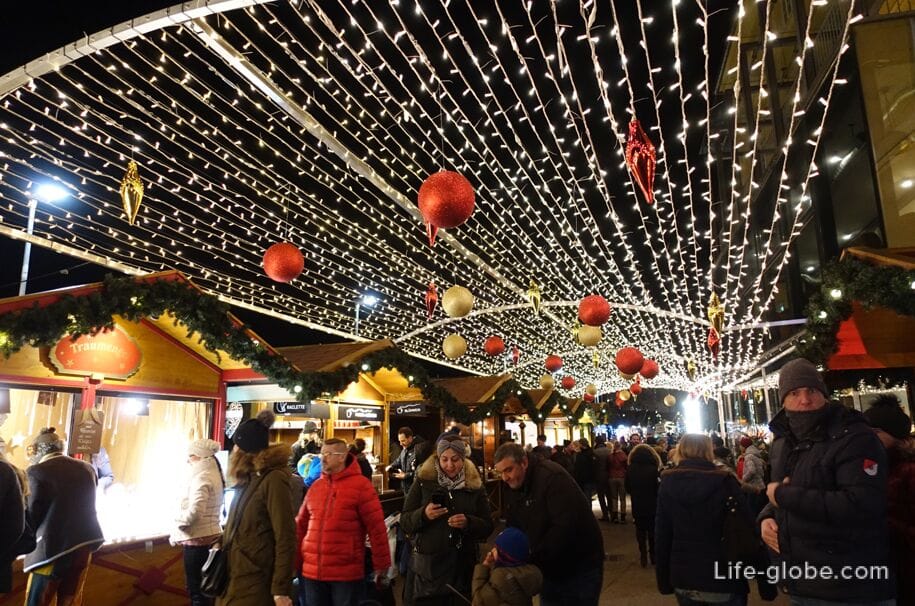
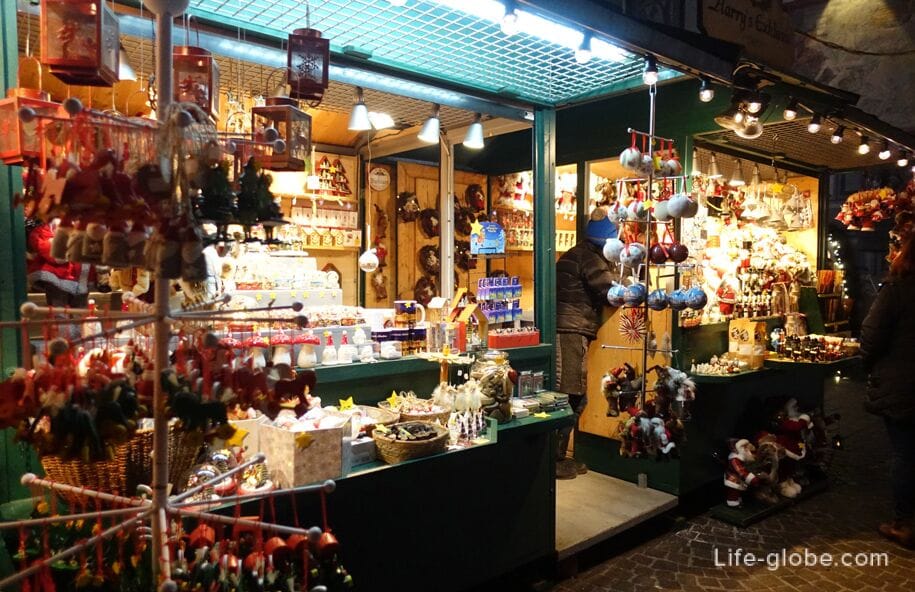
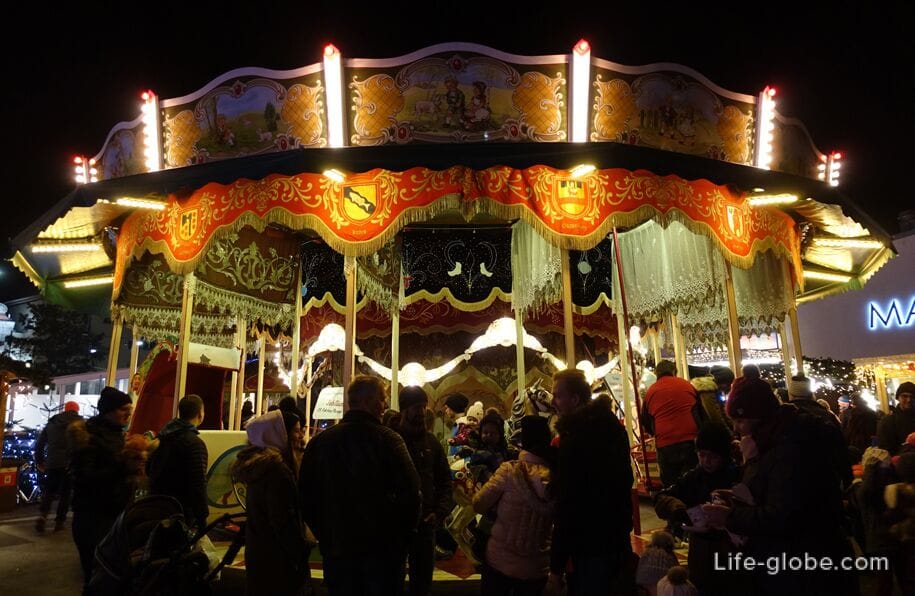
The sightseeing bus Hop-on Hop-off
If you have a little time on the town or you want to explore its main attractions, while moving from object to object with maximum comfort, in Innsbruck you can take a tour on the tour bus Hop-on Hop-off.
Information about the tour bus, including bus stops, travel time and ticket prices can be found on the website.
With the Innsbruck Card - free card you can also purchase here.
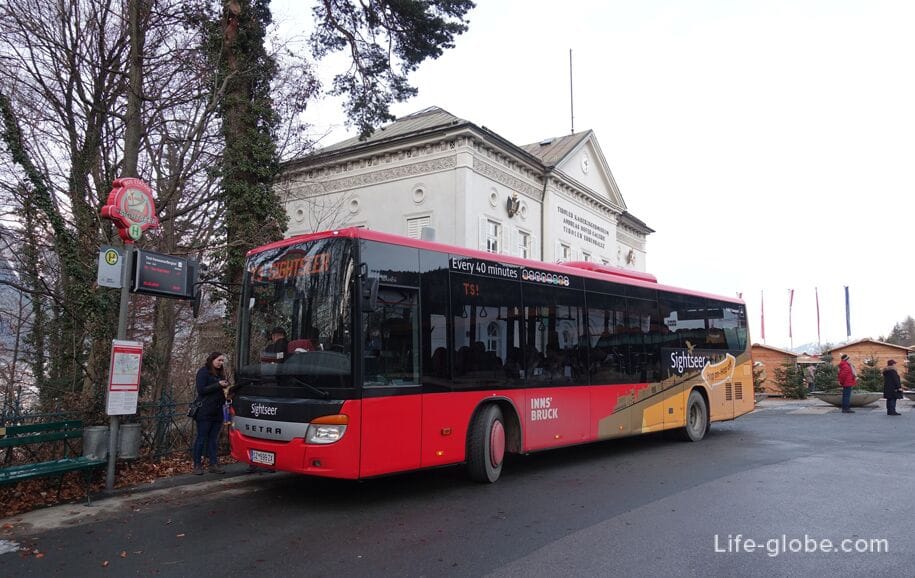
The Innsbruck card
Tourist map of Innsbruck (Innsbruck Card) allows you to make free travel on public transport, a trip on the tour bus, and also includes free admission to attractions and museums, services and discounts.
There are cards for 24, 48 and 72 hours.
Read more about maps you can find here.
Public transport Innsbruck
Urban public transport in Innsbruck is provided by buses and trams (website).
Within the city has an international airport (Flughafen Innsbruck), bus station and two railway stations (Innsbruck-Westbahnhof and Innsbruck Hauptbahnhof).
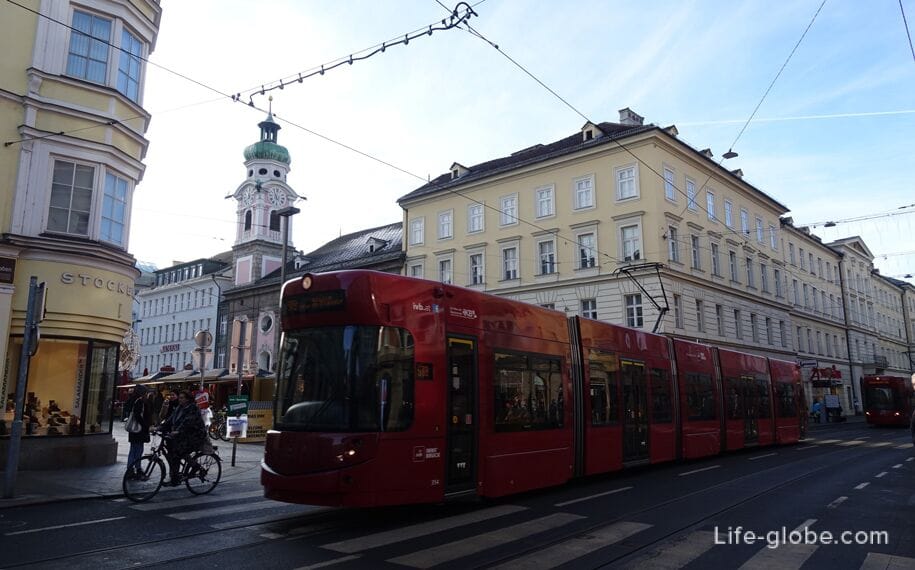
At Innsbruck, on a horse cart
In the center of Innsbruck, you can ride in a horse cart. Carriages waiting for their passengers in the alley (street Renberg / Rennweg), Hofgarden between the Park and the building of the Congress (Congress).
Cost of walks: 30 minutes - 30 Euro; 1 hour - 55 euros.
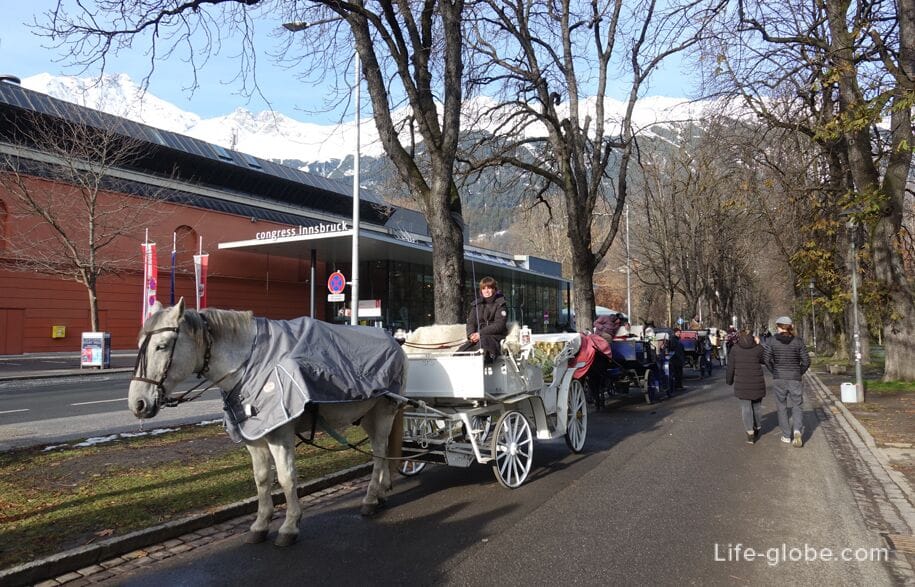
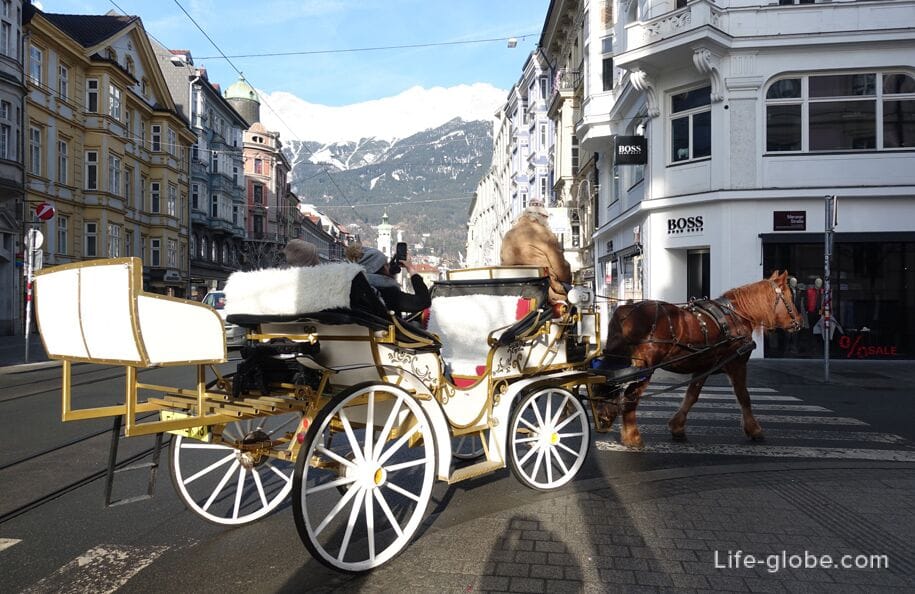
Where to go from Innsbruck
The Museum Swarovski Crystal worlds
Museum Crystal worlds Swarovski (Swarovski Kristallwelten) was opened in 1995 in honor of the 100th anniversary of the Swarovski company and created by multimedia artist Andre Heller.
In the surreal labyrinths and halls of the Museum presents the installation of crystals in the interactive space.
The Museum itself is underground, above the surface is only the entrance, made in the form of a large head with eyes of crystals and covered with greenery. The mouth of the head of a giant erupts a waterfall flowing into the pool.
In the open area is a Park with a labyrinth and art objects.
Within the Museum there are the Swarovski shop and the café-restaurant serving international and seasonal cuisine.
Museum website: kristallwelten.swarovski.
Address: the Museum is located in the municipality of Wattens (Wattens), 19 km from the historic centre of Innsbruck, at: Kristallweltenstrasse, 1.

The amusement Park AREA 47-Tirol
Park AREA 47-Tirol - the largest outdoor amusement Park in Austria, suitable for lovers of active holidays.
In the Park: rafting, canyoning, motocross, obstacle course, climbing tower, mountain Biking, water area, etc.
The Park's website: area47.
Address: Ötztaler Achstr. 1, 6430 Ötztal Bahnhof.
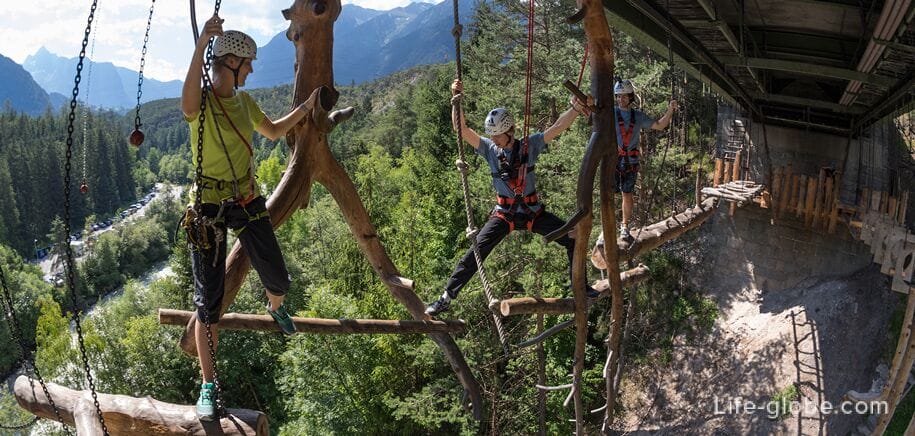
Aqua House
Aqua Building (Aqua Dome) - a modern and architecturally impressive thermal Spa complex in the Alps with a futuristic world of water and saunas, a Spa and fitness center, lounge, restaurant, children's own world, as well as a cosy 4-star hotel Aqua Dome 4 Sterne Superior Hotel & Tirol Therme Längenfeld superior.
The thermal bath consists of 12 indoor and outdoor pools with water temperature 34-36°C.
When booking rooms in the hotel guests can enjoy Wellness centre with an area of 20,000 square meters where you can enjoy the Spa services. The hotel has a water Park with 2 swimming pools and a water slide for children and families. In the room price included Breakfast and dinner. Link to the hotel
Website: aqua-dome.
Address: Oberlängenfeld 140, 6444 Oberlängenfeld.
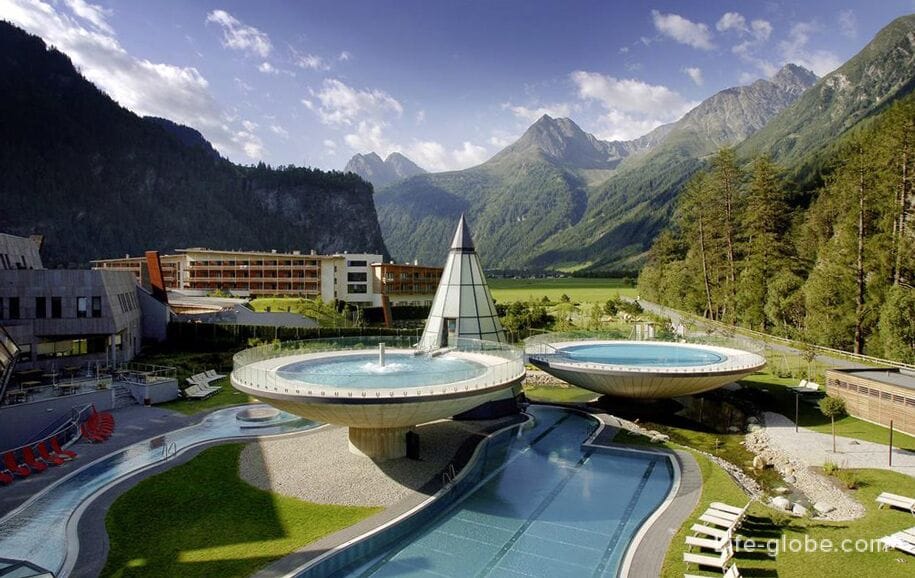
Museum "007 Elements"
Museum "007 Elements" or the world of Jamesa bond - the world's first cinematic installation dedicated to James bond.
The Museum sends visitors on a journey through the film about James bond: cars, gadgets and technology, compelling characters, a panoramic deck, a film about the history of films about James bond, etc.
Museum website: 007elements.
Address: Dorfstraße 115, 6450 Sölden.
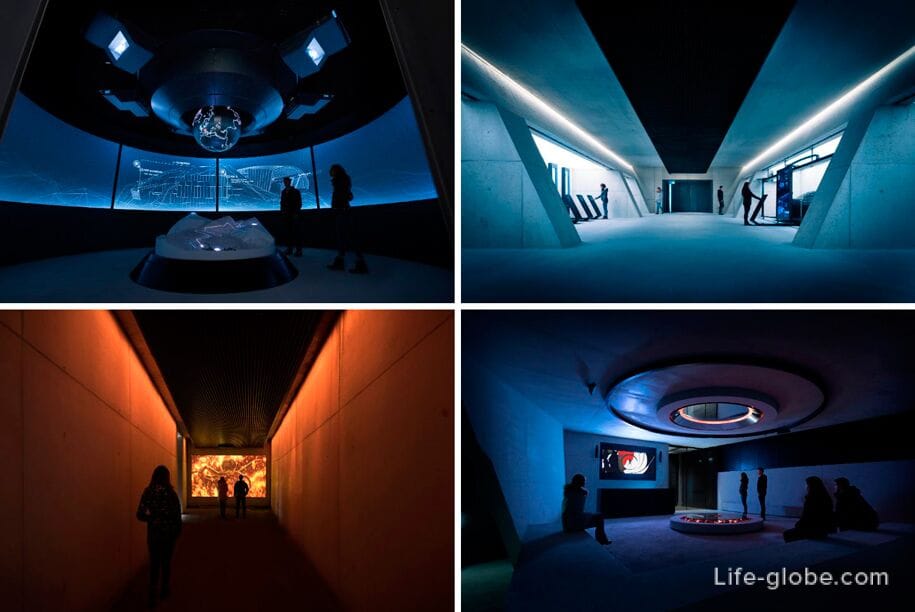
Locks
You can visit the castles and fortresses of Austria.
For example, castle Tratzberg (Tratzberg Castle), the fortress of Kufstein (Kufstein Fortress), the schattenburg castle (Schattenburg Museum), hohenwerfen castle (Erlebnisburg Hohenwerfen), the Mauterndorf castle (Burg Mauterndorf), Hochosterwitz castle (Burg Hochosterwitz), the Eggenberg Palace (Schloss Eggenberg), castle Oberkapfenberg (Burg Oberkapfenberg), etc.
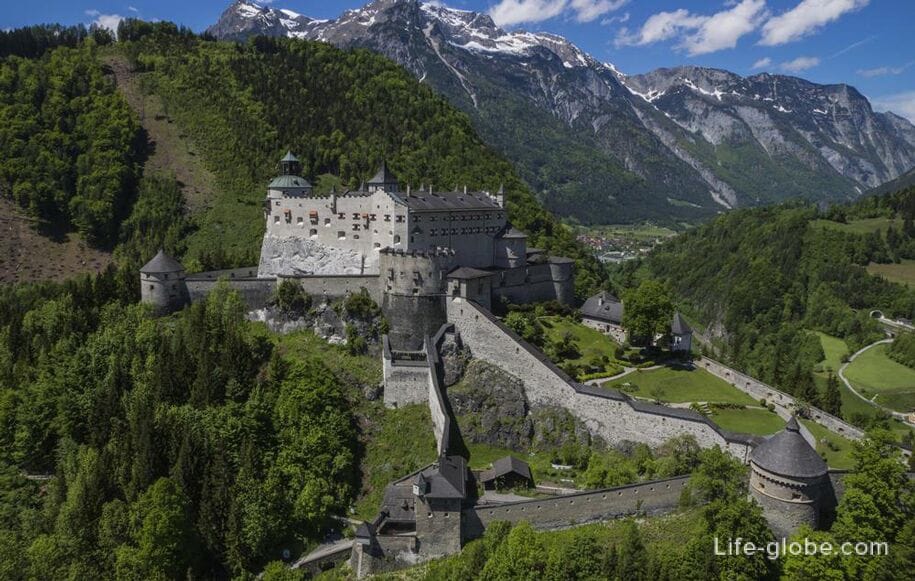
Historic railroad
You can ride on the historic Simmeringly railway which was the world's first mountain railway and still operates as part of the Austrian southern railway.
The oldest section of the road has a length of 42 kilometers. It was built in 1848-1854 and passes through picturesque mountain district (Temerinski pass) between Mürzzuschlag and Gloggnitz.
Given the very complex topography and significant changes in elevation, the road is one of the outstanding achievements of civil engineering of the 19th century.
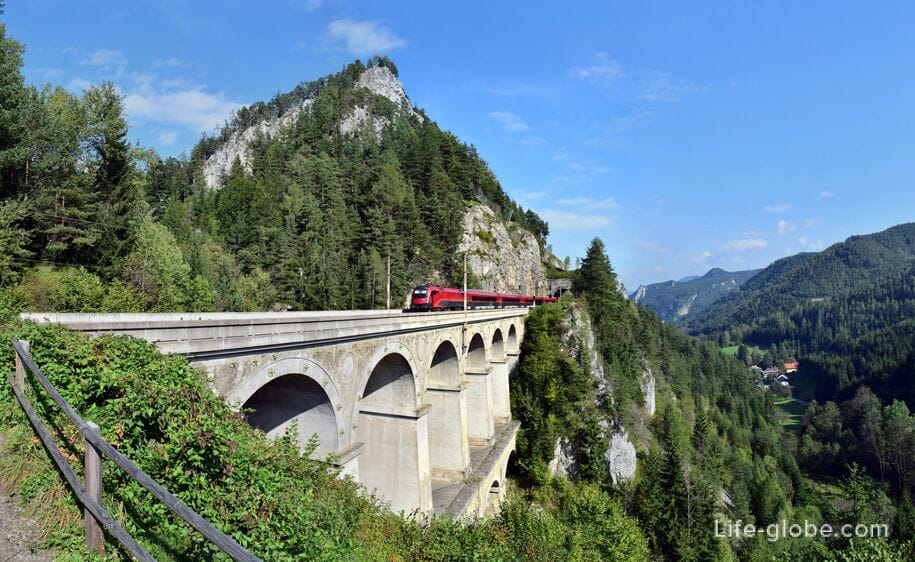
City
In addition to individual objects, Innsbruck, Austria, you can also find other city of Austria (scenic Hallstatt, Salzburg, Vienna), as well as the nearby cities of Italy (Bressanone, Merano, Wellness lake Garda, Verona) and Germany (Mittenwald, a charming, cozy Rosenheim, monumental Munich, castles in Schwangau), the tiny Principality of Liechtenstein, etc.
If you want to spend time in the city of Innsbruck, and travel through Austria, the most convenient option would be to rent a car. You can rent a car in advance, even from home. The car will be waiting for you immediately upon arrival at the airport or in the city centre.
How to get to Innsbruck
In Innsbruck is the largest airport in Tyrol - airport Innsbruck Kranebitten (Innsbruck Flughafen), which connects Innsbruck with Austria, and many cities of Europe, Russia and Turkey. Tickets in Innsbruck...
From Innsbruck airport to the city centre can be reached:
- public transportation - bus lines F plying on the route Flughafen Innsbruck - Neu-Rum Kaplanstraße, including passing the city center on the street of Maria Theresa and the main train station of Innsbruck.
If you want to get into the old city, then better stop Anichstraße/Rathausgalerie.
The journey time is approximately 20 minutes. The fare is € 2.50 (+ 0.60 euros if the ticket is purchased from the driver).
The movement of the bus:
- airport: from 05:59 until 23:26 hours. Range of motion Monday - Friday and Saturday - every 15 minutes after 20:00 every half hour. Sunday and holidays, the interval is 30 minutes;
- main railway station: from 5:41 to 22:58 hours. The interval is the same as from the airport of Innsbruck.
The scheme of the bus route
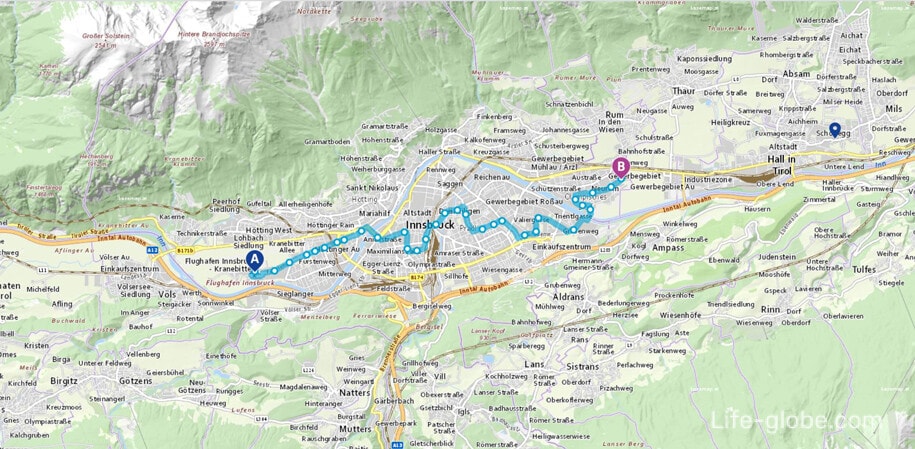
- a taxi. Book a taxi/Shuttle service is possible in advance, even from home. At any time of the day, at the airport, you will meet your driver with a sign, which will be written your name and surname. For taxi is enough to tell us your flight details!
- car. The most convenient way of independent movement in Austria is a car. You can rent a car in advance, even from home. The car will be waiting for you upon arrival. Vehicles for hire can view and book here...
In Innsbruck (as well as from Innsbruck) from many European cities can be reached by buses, including the company FlixBus. See directions for buses and buy a ticket here....
In Innsbruck there are two train stations that take trains from other cities in Austria and some cities in Europe.
Where to stay in Innsbruck
The choice of accommodation in Innsbruck are very diverse, ranging from budget guest houses and apartments to hotels of high comfort, situated in the historic city center and near the quays, and more remotely from those.
All accommodation facilities in Innsbruck you can view and book here
Currency
Austria is in the Euro zone because the country's currency is the Euro (€). Payment is accepted in cash and Bank cards in many shops, cafes and restaurants.
In some restaurants a payback Bank card are only possible of the invoice amount more than 30-40 euros.




